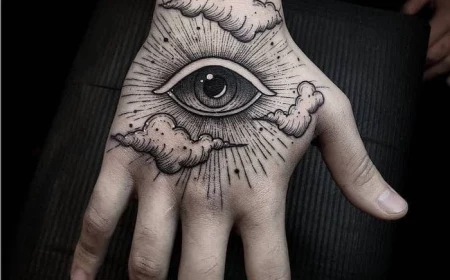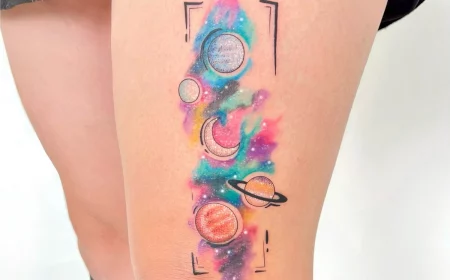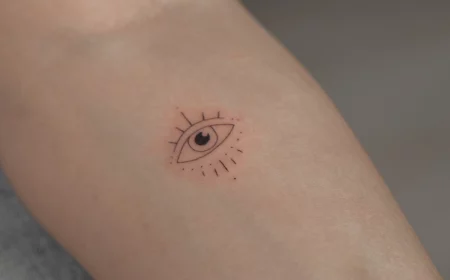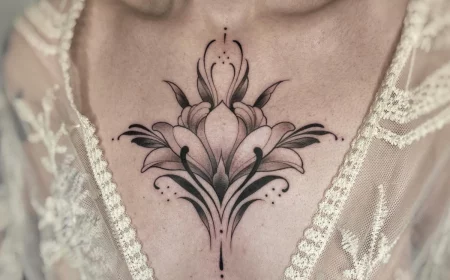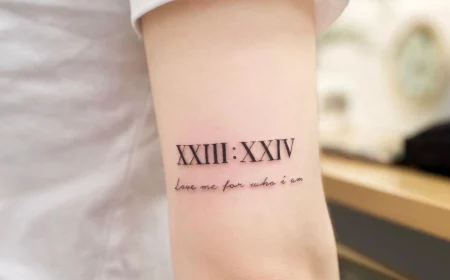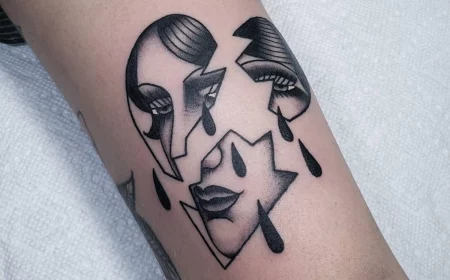Everything You *Actually* Need to Know About Dragon Tattoos
In all my time as a tattoo artist, I’ve probably put more dragons onto skin than any other design. Seriously. Trends in tattooing come and go, but the dragon is a constant. It’s a powerful choice, both for what it represents and for the technical skill it demands to look incredible.
In this article
I’ve had clients bring in everything from a tiny, blurry screenshot to deeply personal stories about what this creature means to them. I once worked with a firefighter who wanted a dragon to represent the ‘beast’ of the fires he ran into; we designed it so the smoke and flames flowed perfectly with the muscles in his arm. That’s when the magic happens—when your vision meets an artist’s experience with how ink and skin really work together.
A dragon isn’t just a picture you pick off a wall. It’s a commitment. So let’s get into what it really takes to create a piece of art that flows with your body and looks amazing for decades to come.
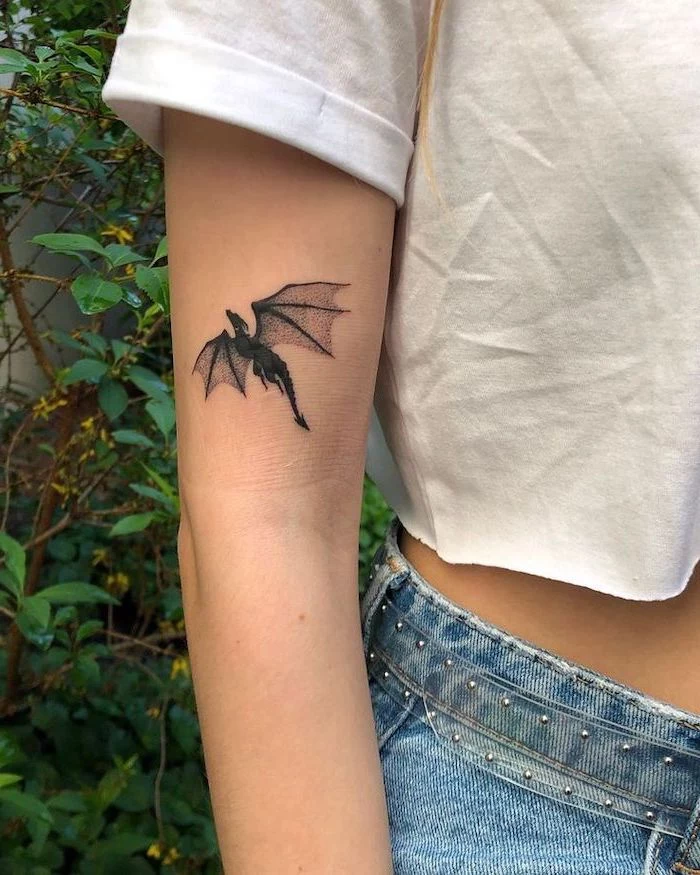
How Ink and Skin Really Work
Before we even think about styles, you should know what’s happening on a technical level. It’s not magic; it’s a precise process. A tattoo machine uses needles to place ink into the dermis, which is the stable layer of skin right below the surface you see every day. The top layer, the epidermis, is constantly shedding, but the dermis holds on. That’s why tattoos are permanent.
Understanding this is key to why some designs look great forever and others… don’t. A dragon is usually complex—it has scales, claws, smoke, or fire. Each part needs a different tool. For those super-crisp, fine scales, a pro might use a tight 3-round liner (3RL) needle. But for the soft, cloudy background of a traditional Eastern dragon? They’ll switch to something like a 15-curved magnum (15CM). For you, this means the shading will look soft and smooth, not all patchy and chewed up. It’s the secret to getting that mystical, smoky effect.
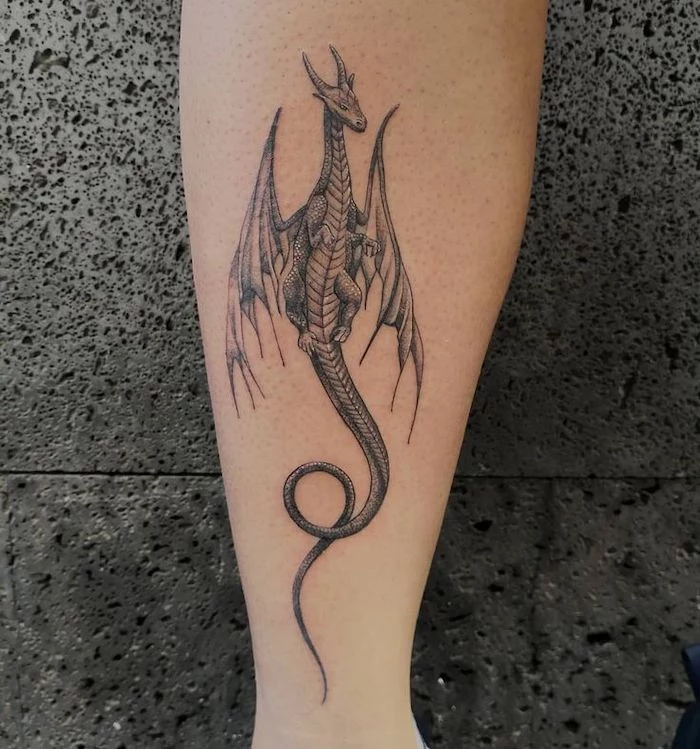
Heads up, though: your skin is a living canvas. The thin, sensitive skin on your ribs is a whole different ballgame than the tougher skin on your outer thigh. On the ribs, an artist has to be incredibly careful. Too much pressure and the lines can “blow out”—that’s when ink spreads under the skin, creating a permanent blurry mess. And this is exactly why a tiny, hyper-detailed dragon on your wrist is often a bad idea. In ten years, those fine lines will soften and blur, turning your epic beast into a sad, gray smudge. A good artist will tell you this upfront. We’re not trying to kill your vibe; we’re trying to give you a tattoo that will still look awesome when you’re older.
Oh yeah, and let’s talk about pain. On a subjective scale, placement matters… a lot. An outer thigh might be a 3 out of 10 on the pain scale for most people. But the ribs? To be frank, that’s often a solid 7 or 8 out of 10. Be mentally prepared for it!
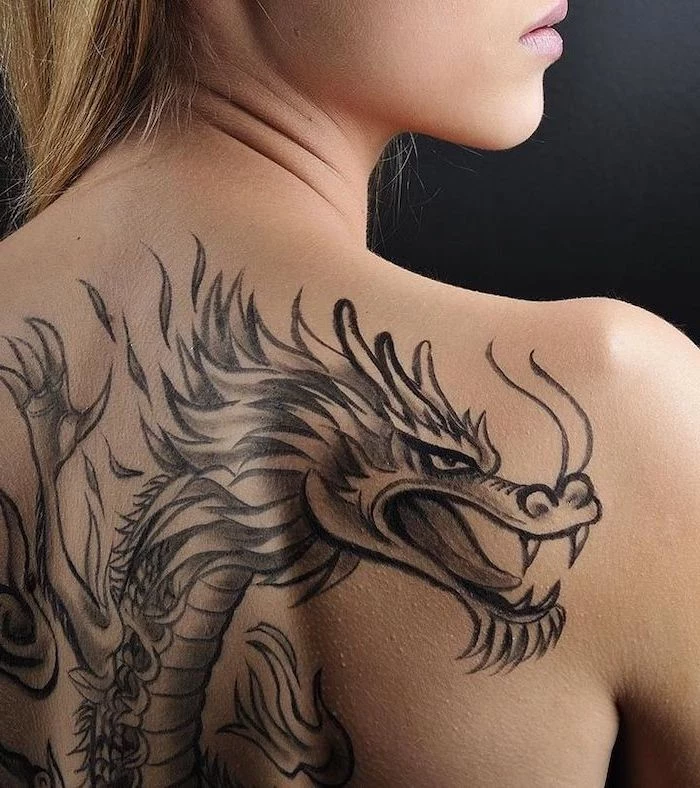
Let’s Talk Money and Time (The Real Deal)
Okay, the two questions everyone has: How much will it cost, and how long will it take? Let’s be real about it. Most reputable artists charge by the hour, typically somewhere between $150 and $250 an hour. A detailed, palm-sized dragon could run you anywhere from $400 to $800 and likely take one session of 2-4 hours.
But a full back piece? That’s a whole different commitment. You’re looking at a multi-thousand-dollar investment, spread out over numerous sessions that could span several months, or even a year. It’s a marathon, not a sprint.
Eastern vs. Western Dragons: More Than Just Wings
Clients often have a general idea, but the two main styles of dragons are worlds apart. They have different histories, shapes, and meanings. There’s no right or wrong answer, just what resonates with you.
The Western dragon is the one you probably know from European folklore. It’s typically a beast of immense power and ferocity. We’re talking about a creature that represents a great challenge to be overcome. Visually, they are almost always bulky, heavily-muscled, and have a pair of large, leathery wings.
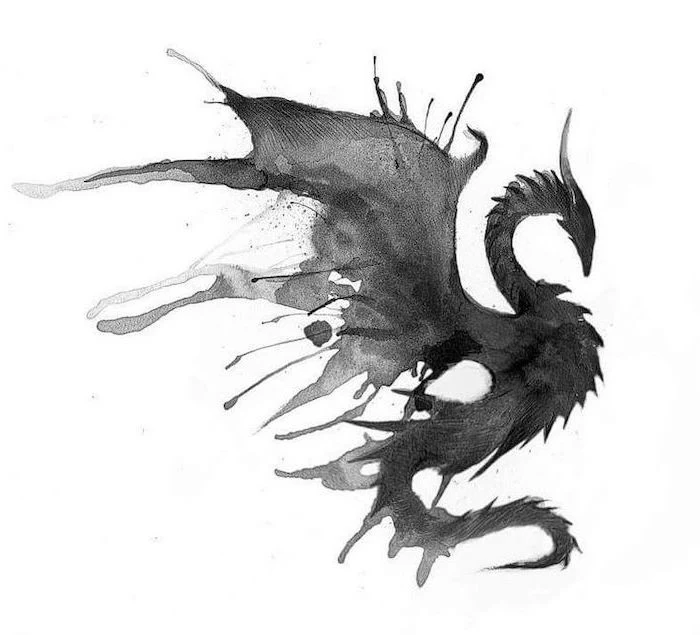
The Eastern dragon, on the other hand, comes from a different tradition entirely. Instead of ferocity, it symbolizes wisdom, prosperity, and spiritual good fortune. These dragons are protectors, not monsters. They have long, serpentine bodies that are incredibly graceful and are usually depicted without wings, as they fly through magical means. Their faces are also distinct, often with long whiskers and a more intricate, wise expression.
A quick breakdown for you:
- Body Shape: Western dragons are thick and powerful. Eastern dragons are long, slender, and snake-like.
- Wings: A classic feature for Western dragons. Eastern dragons are typically wingless.
- Symbolism: Think strength and conquest for the West, versus wisdom and good luck for the East.
How to Find a Great Artist (And Avoid the Bad Ones)
Finding the right artist is the most important step. So, what should you look for? One thing above all else: a portfolio filled with clear photos of HEALED work. Fresh tattoos always look crisp and bright, but how a tattoo settles and heals is the true test of skill. If an artist only shows fresh work, it might be a red flag.
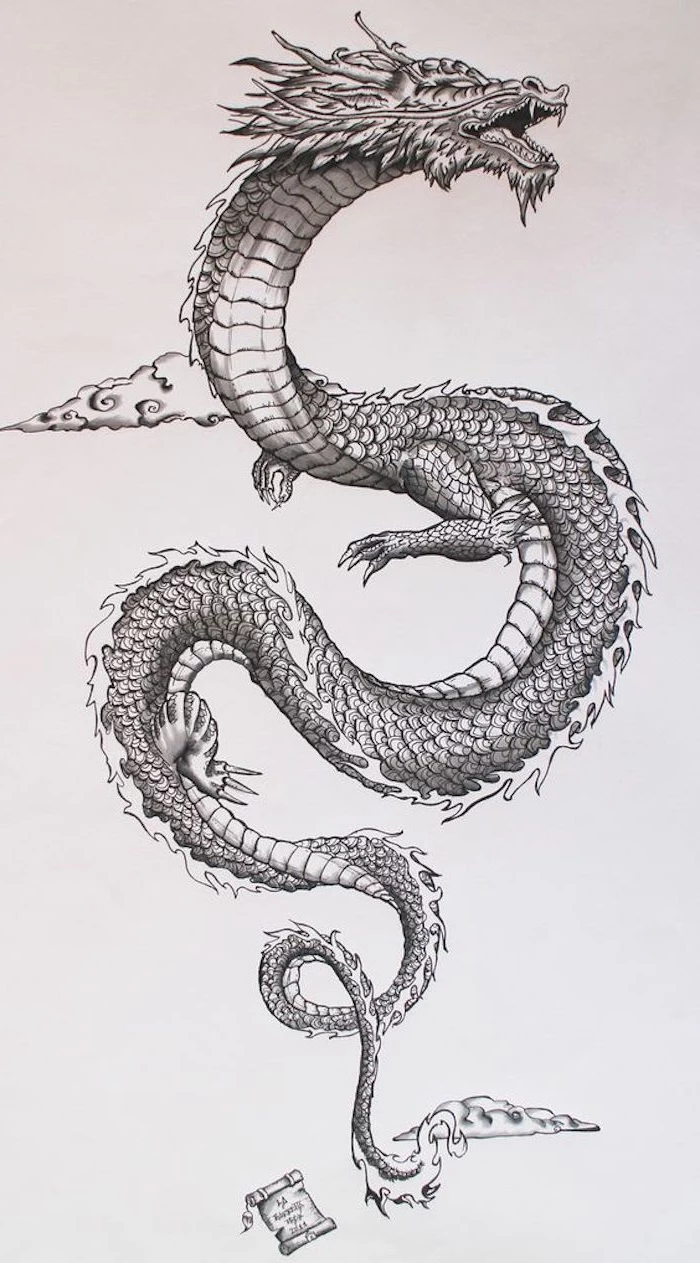
And speaking of red flags, here are a few things that should make you walk away:
- They pressure you to put down a deposit on the spot without a proper consultation.
- The studio looks messy, disorganized, or just plain dirty. Trust your gut on this.
- The artist is dismissive of your ideas or doesn’t seem to be listening.
- They can’t (or won’t) show you photos of their healed tattoos.
Your Homework: Prepping for Your Session and Nailing the Aftercare
Believe it or not, you play a huge role in how well your tattoo turns out. It starts before you even get in the chair and continues long after you leave.
Here’s a quick pre-session checklist. Don’t skip this stuff!
- Get a good night’s sleep. Being well-rested makes a huge difference in your pain tolerance.
- Eat a solid meal 1-2 hours before your appointment. This keeps your blood sugar stable and helps prevent feeling faint.
- Don’t drink alcohol for at least 24 hours beforehand. Alcohol thins your blood, which can lead to more bleeding and a poorly healed tattoo.
- Wear something comfortable that gives the artist easy access to the area being tattooed.
After your session, the ball is in your court. Aftercare is EVERYTHING. A perfect tattoo can be ruined by lazy healing. Your artist will give you specific instructions, but here’s a basic shopping list to get you started:
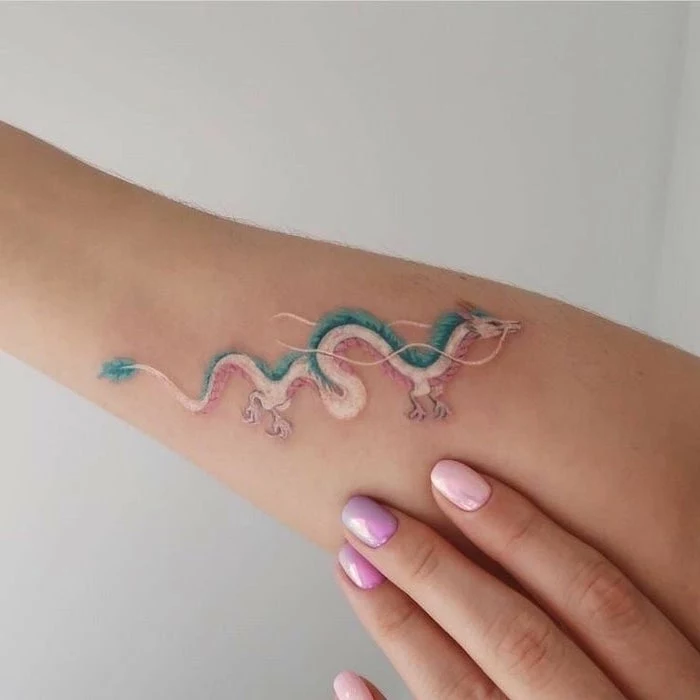
- Antibacterial Soap: A gentle, unscented one like Dial Gold is perfect. You can find it anywhere for about $4.
- Healing Ointment: Many artists recommend a thin layer of something like Aquaphor or a specialized tattoo balm for the first few days. A tube costs around $8.
- Unscented Lotion: After the initial healing, you’ll switch to a good, basic lotion like Lubriderm or Cetaphil to keep the skin hydrated. A bottle is usually under $10.
From the first sketch to the final healed piece, getting a dragon tattoo is a journey. Take your time, do your research, and find an artist you connect with. When you do, you’ll end up with a piece of art that’s not just on your skin, but part of who you are.
Inspiration Gallery
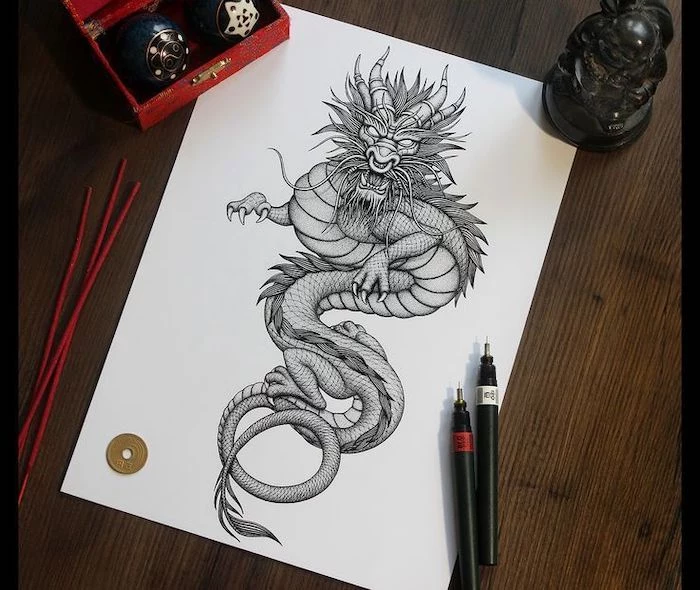
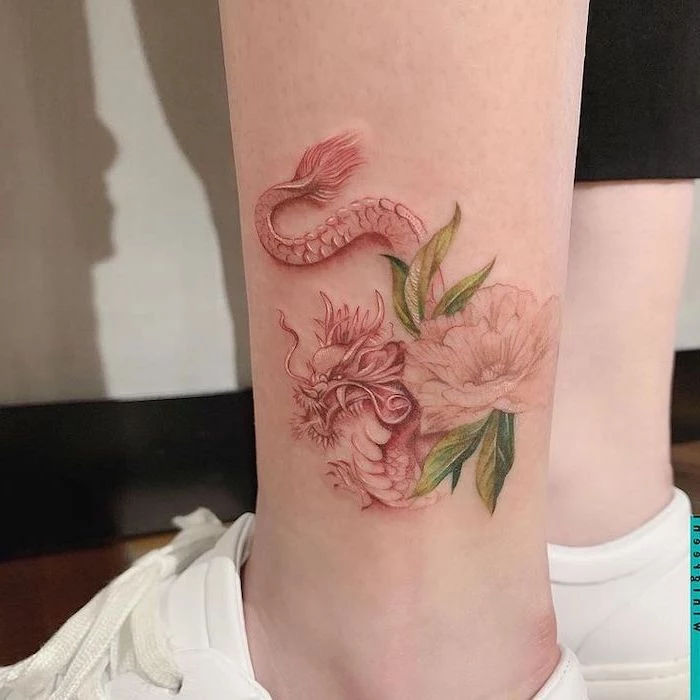
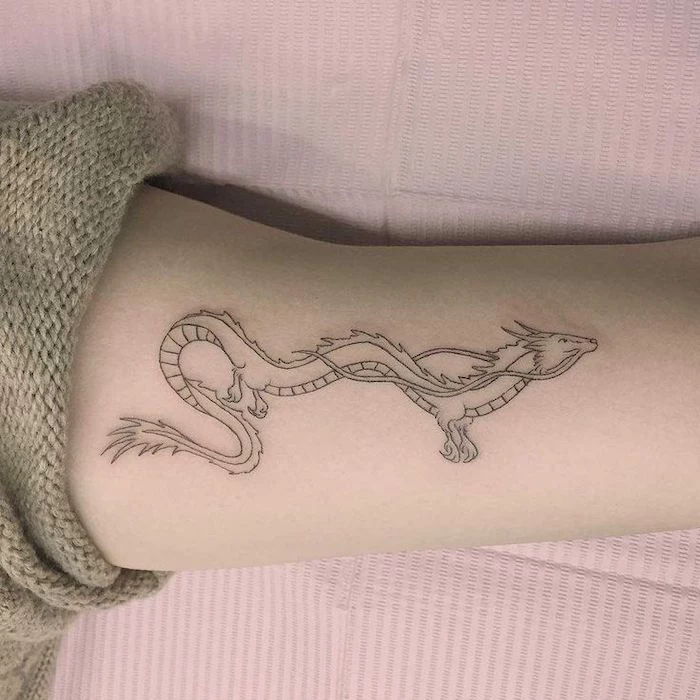
When planning your dragon’s placement, think in terms of movement. A dragon coiling around a forearm, its head resting on the hand, tells a different story than one whose wingspan stretches across the shoulder blades. The former is a constant companion; the latter is a statement of power. Let the contours of your body—the curve of your calf, the plane of your back—dictate the creature’s final form.
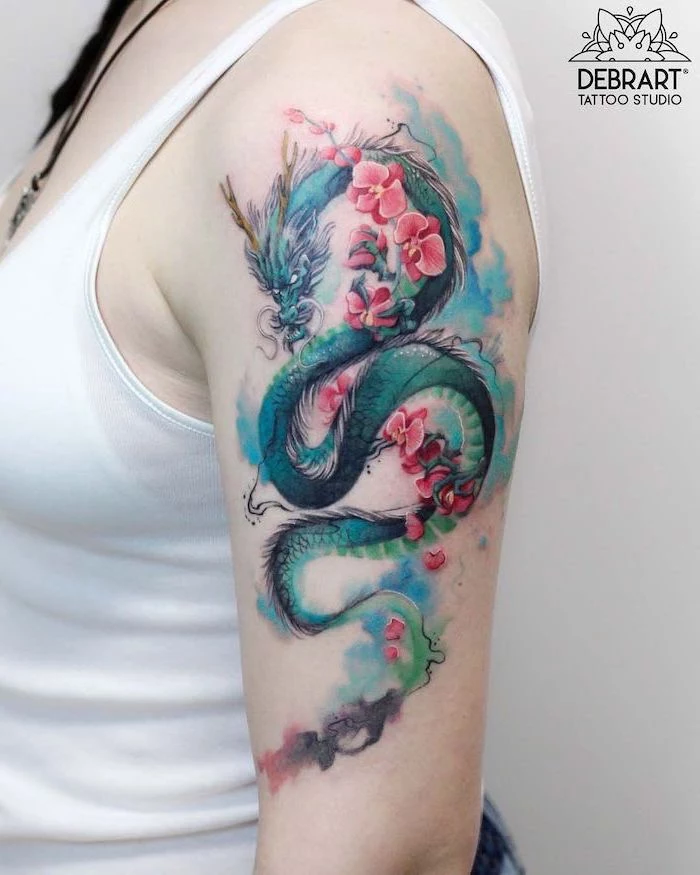
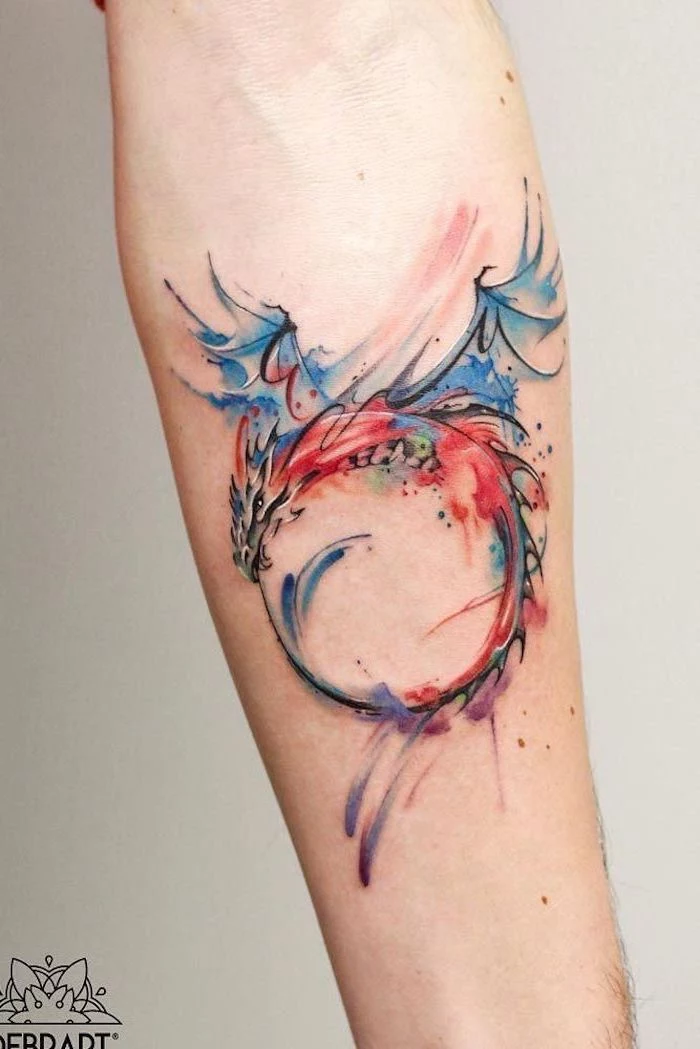
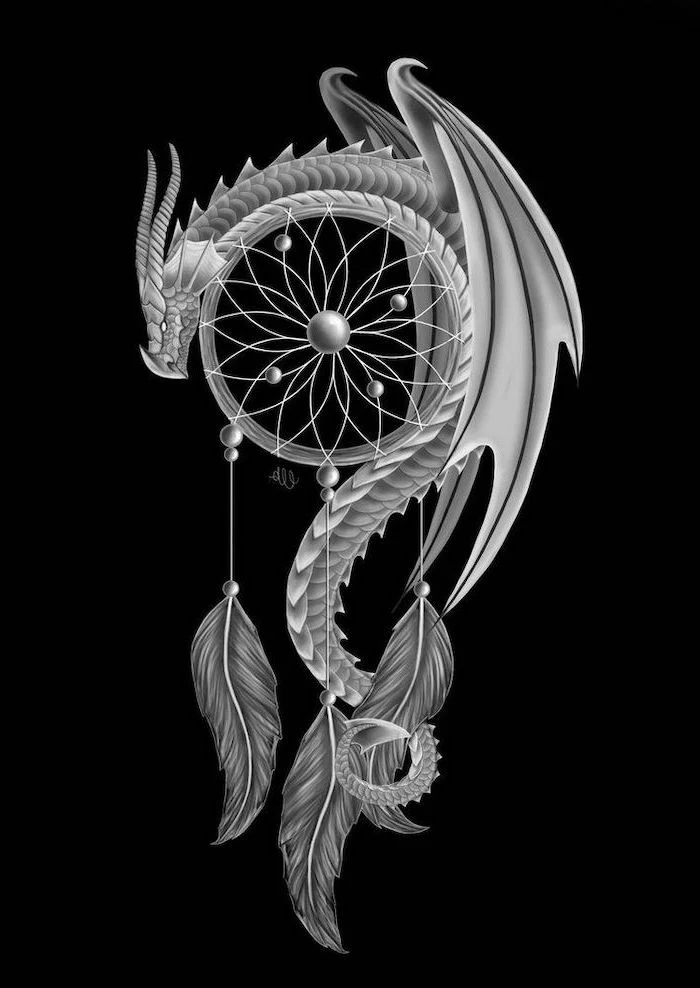
- Does the artist’s portfolio feature multiple, high-quality dragon tattoos?
- Are their lines clean and their color saturation solid, even in healed photos?
- Do they specialize in the style you want (e.g., Japanese Irezumi, Neo-traditional, watercolor)?
- Are they willing to do a custom design based on your ideas?
The secret to a great dragon? Finding an artist who is as passionate about them as you are. A quick check on Instagram for hashtags like #dragontattoo or #irezumi can reveal specialists in your area.
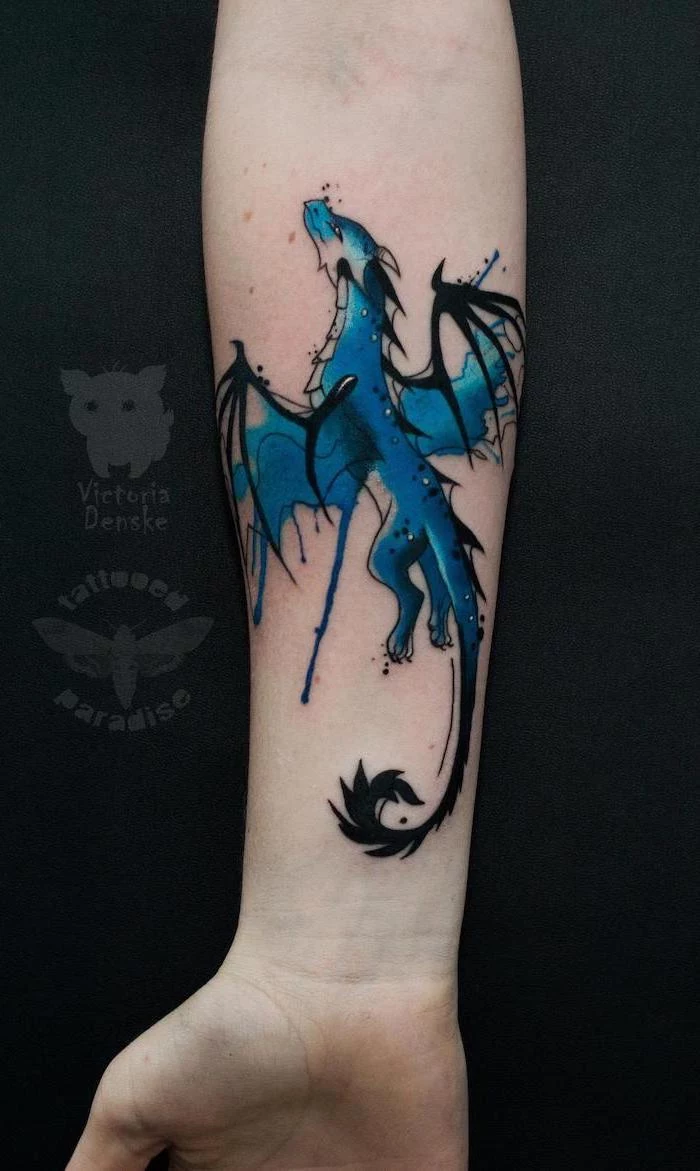
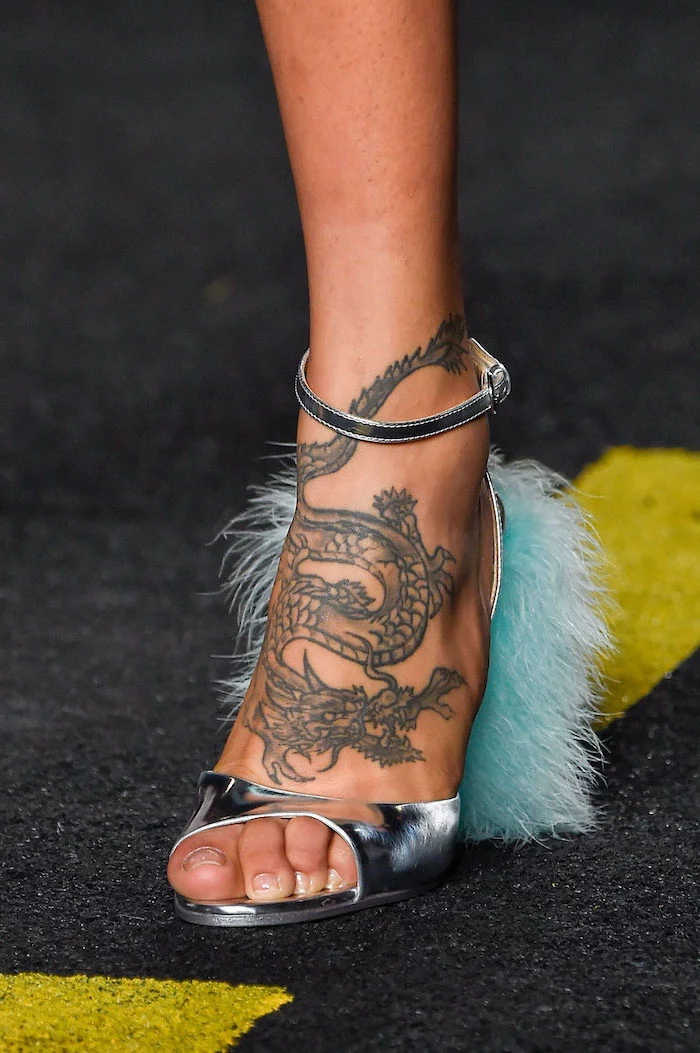
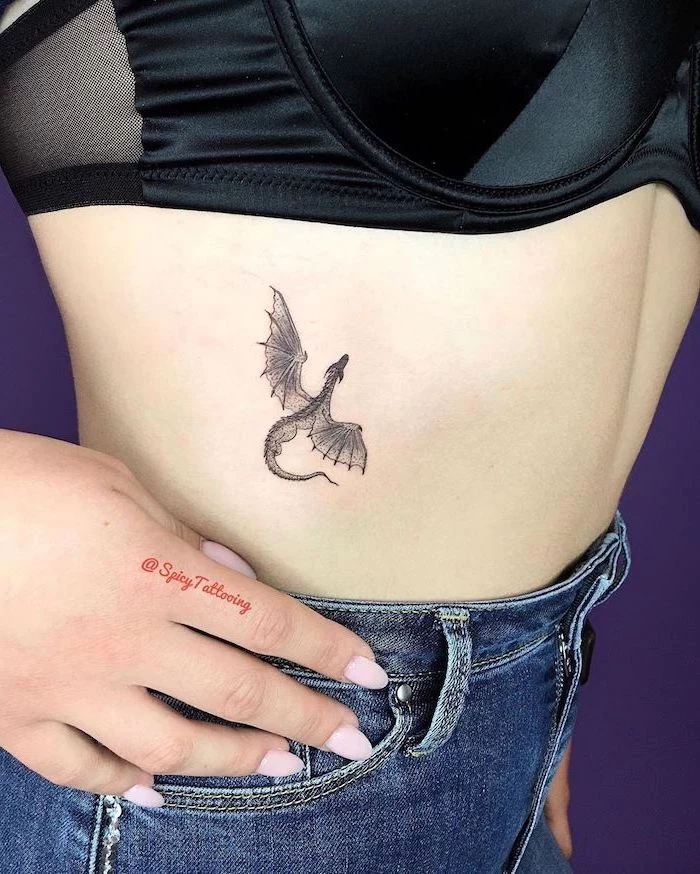
Think beyond the dragon itself: The negative space is just as crucial. In traditional Japanese tattoos, the background elements—swirling wind bars, crashing waves, or dense clouds—are what give the dragon life and context. An expertly designed background ensures your tattoo is a complete scene, not just an isolated sticker on your skin.
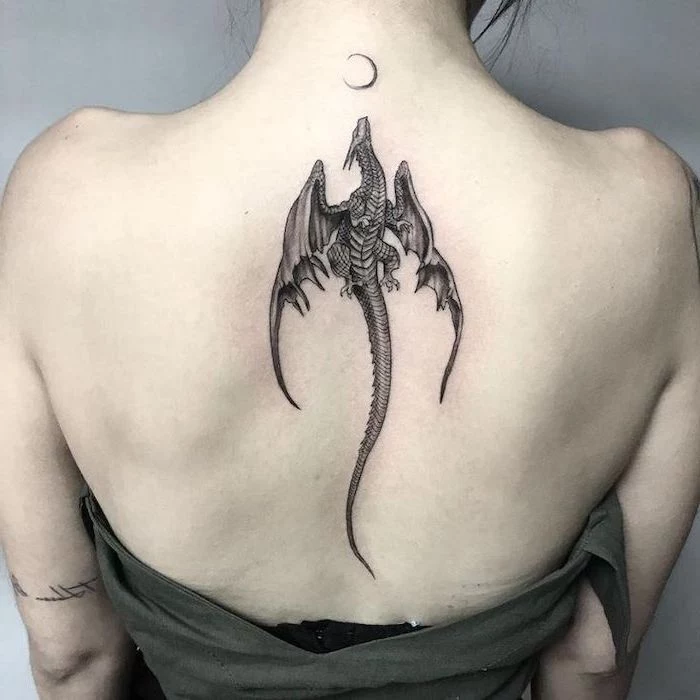
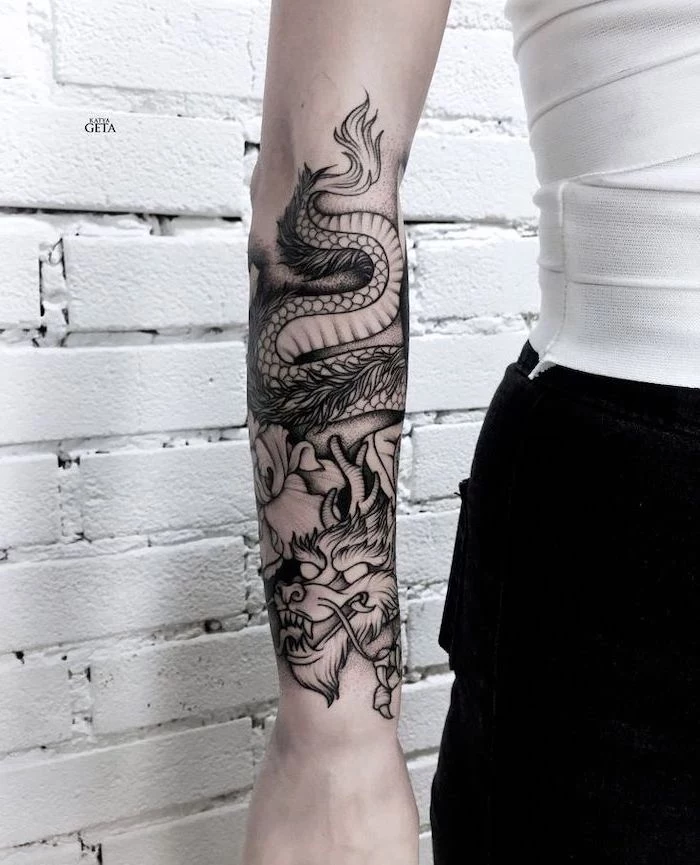
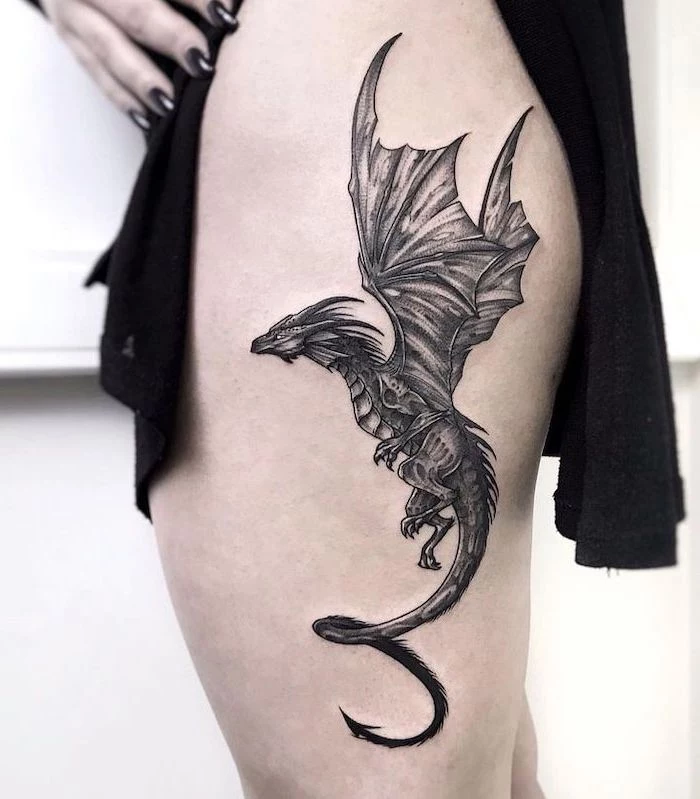
In Chinese mythology, dragons are rulers of moving bodies of water, such as waterfalls, rivers, or seas. They are seen as powerful, benevolent forces, a stark contrast to their fire-breathing European counterparts.
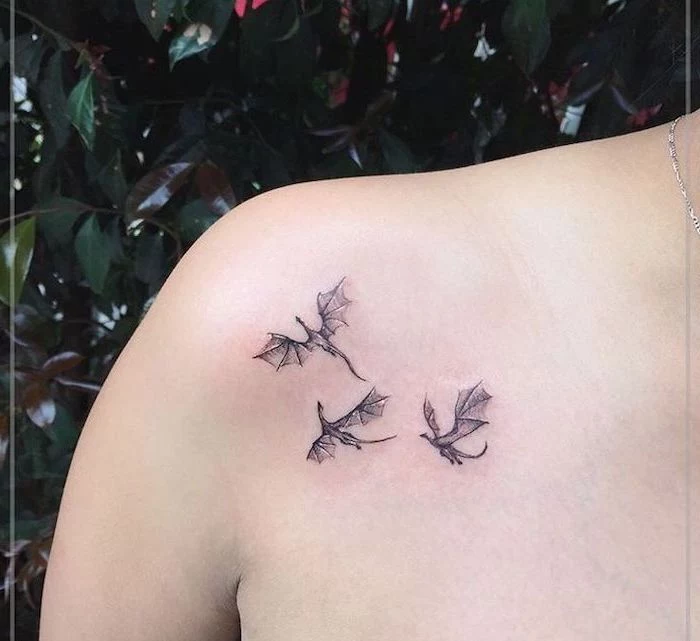
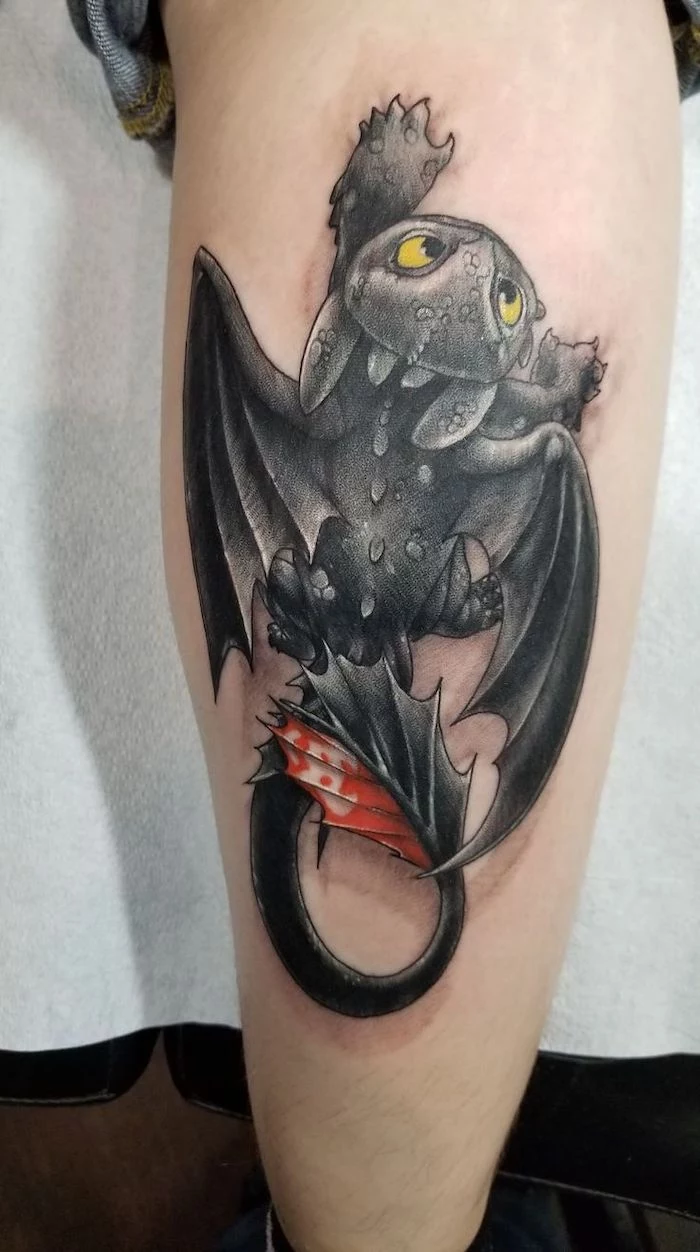
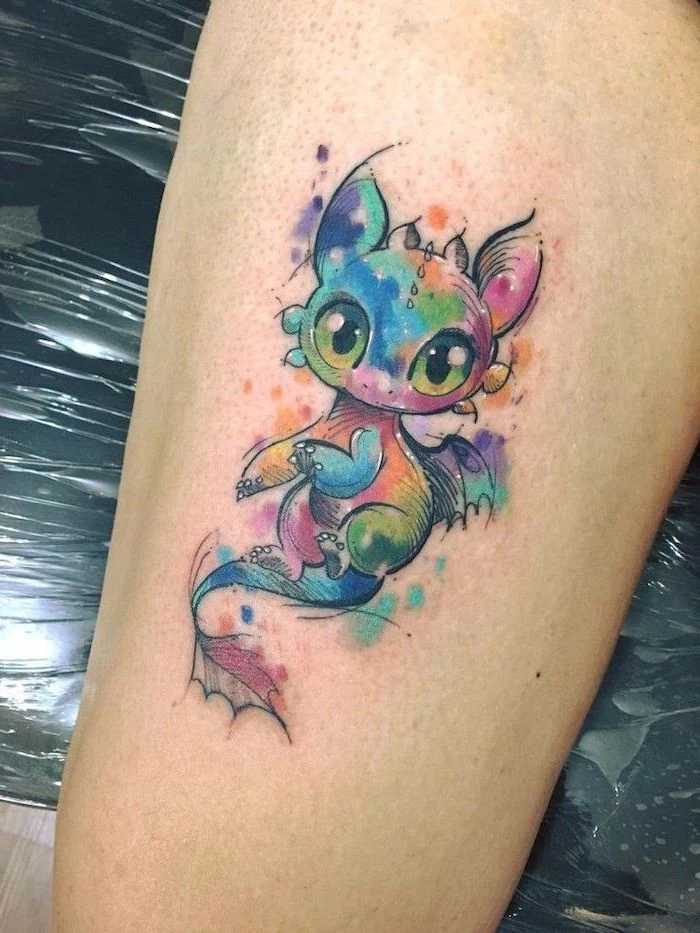
The color palette you choose dramatically alters your dragon’s personality. While black and grey emphasizes form and shadow, color brings symbolic meaning to the forefront. Consider these classic associations:
- Red: Power, passion, protection, and often associated with fire and good fortune.
- Black: Wisdom, experience, and the depths of the unknown.
- Green: Nature, life, earth, and often linked to Celtic or earth dragons.
- Gold: Spirituality, prosperity, and divine power, a common choice for imperial dragons.
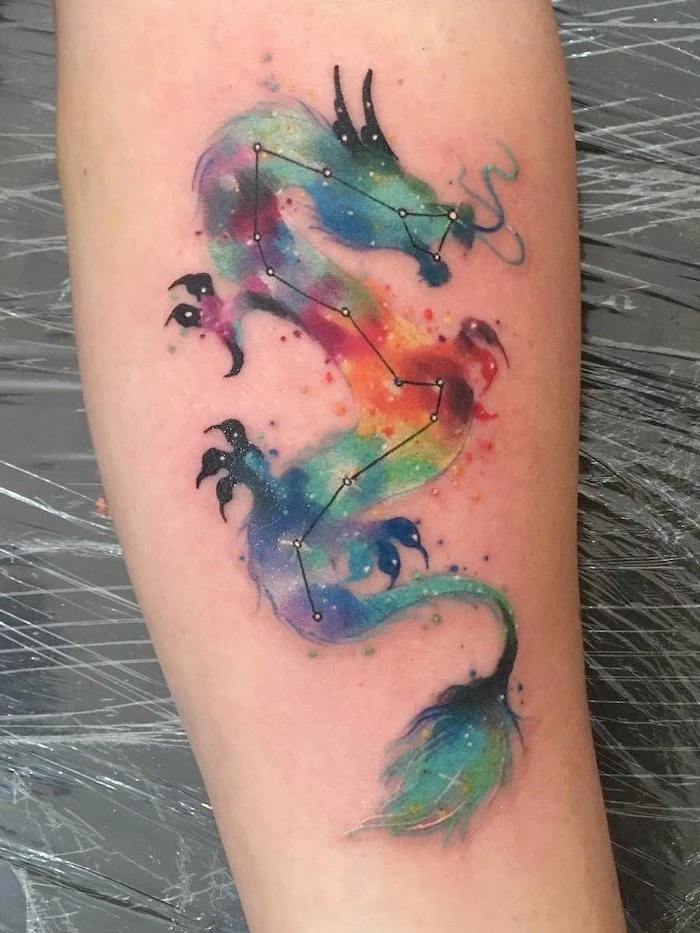
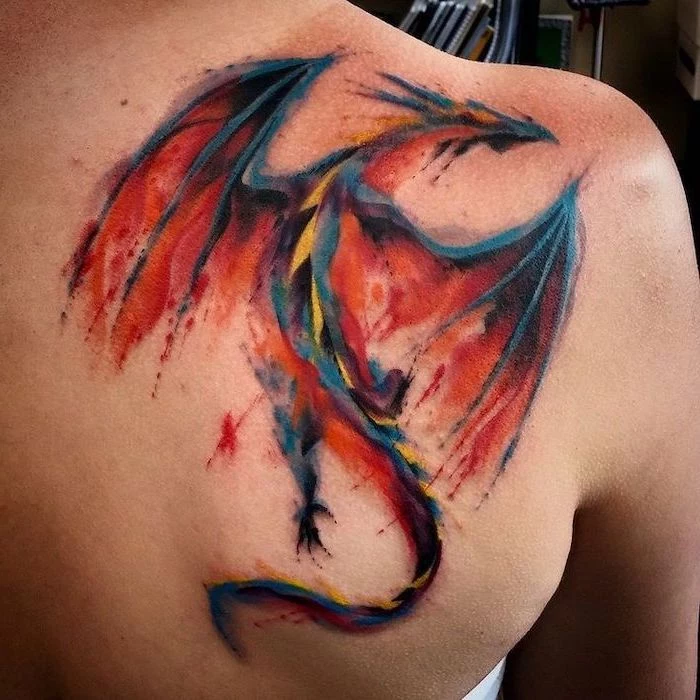
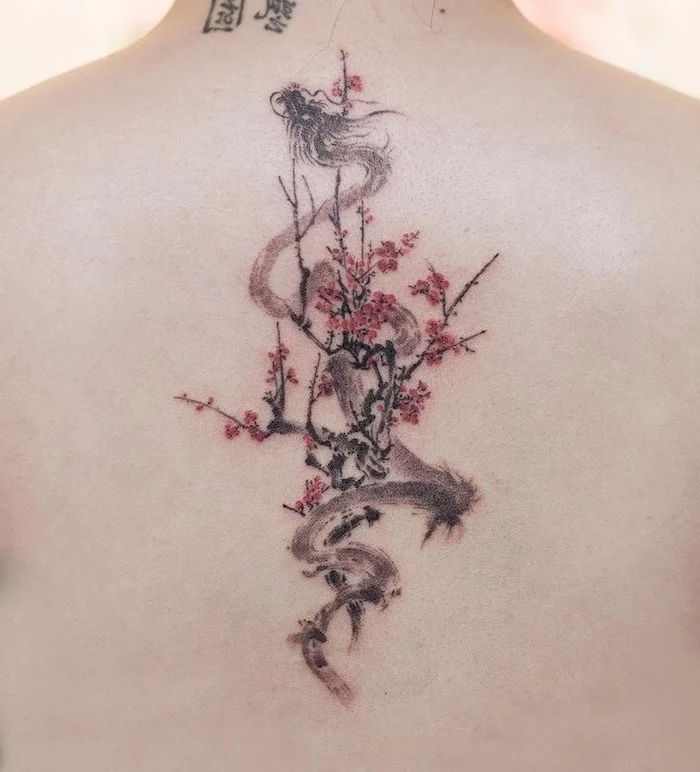
How painful is a rib cage dragon tattoo, really?
Let’s be direct: it’s one of the more challenging spots. The skin is thin, it’s directly over bone, and the constant motion of breathing adds a unique element. Most people describe the outlining as a sharp, intense burn, while shading is a deep, vibrating ache. The key is breaking it into multiple, shorter sessions (2-3 hours max) and working with an artist who has a light, steady hand.
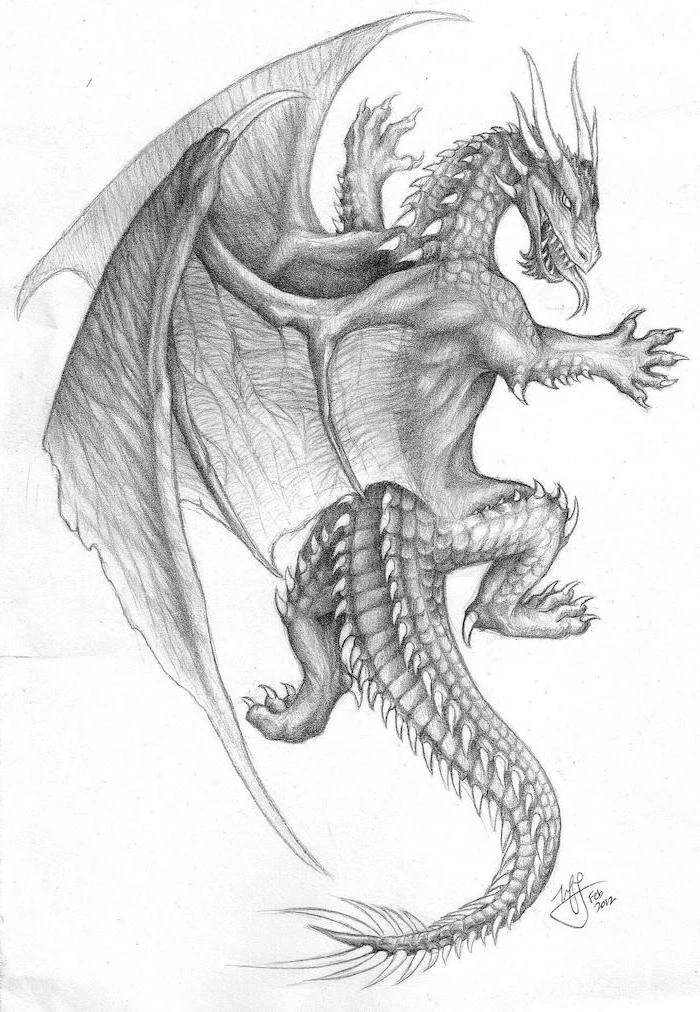
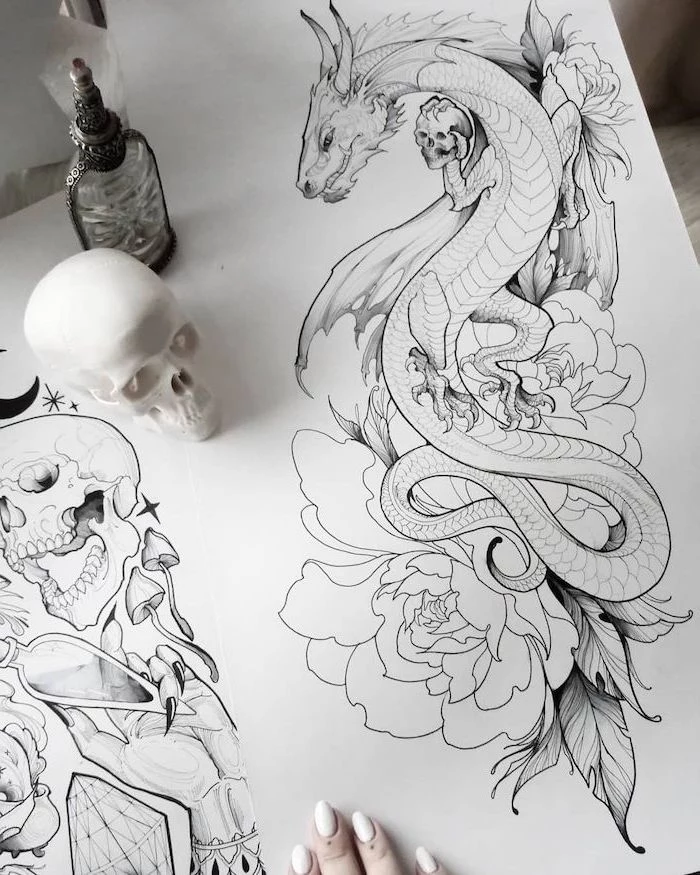

Japanese Dragon (Ryū): Typically depicted as a serpentine, wingless creature with three claws, associated with water and wisdom. They are graceful, flowing, and often surrounded by waves or clouds.
European Dragon: A stocky, reptilian beast with large wings, four legs, and a fiery breath. They represent raw power, conquest, and are often portrayed as fearsome adversaries.
Knowing this distinction is the first step in defining your design’s core identity.
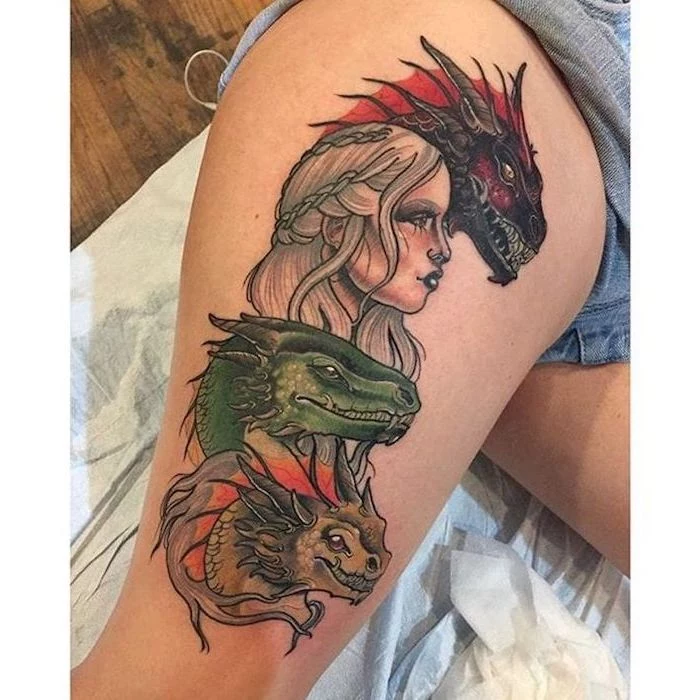
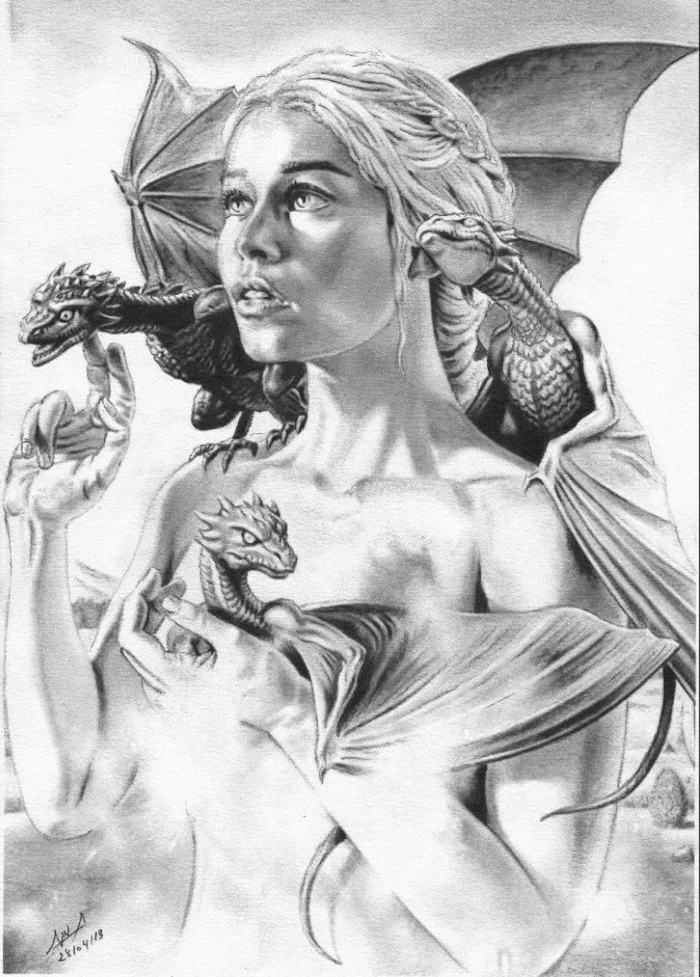
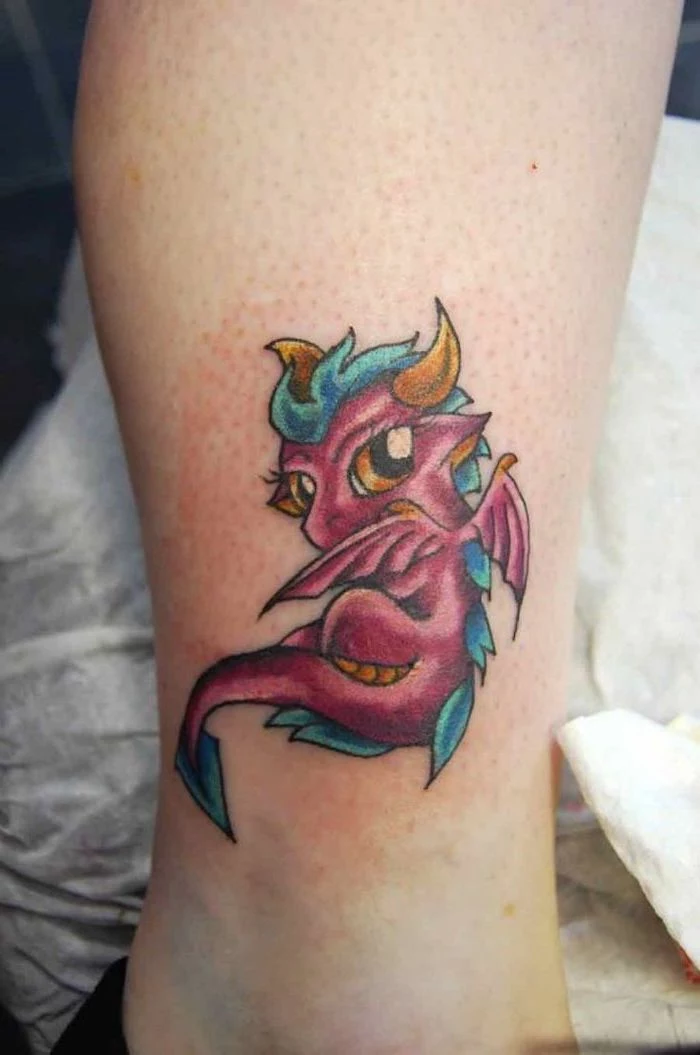
A study in the journal *Archives of Dermatology* found that black is the easiest tattoo color to remove, while green and blue are among the most stubborn.
For a complex dragon tattoo, this means a cover-up is often a better route than laser removal. The sheer amount of ink, especially in vibrant colors from brands like Eternal Ink or Fusion Ink, makes complete erasure a long, expensive, and sometimes impossible process. Choose your design for life.
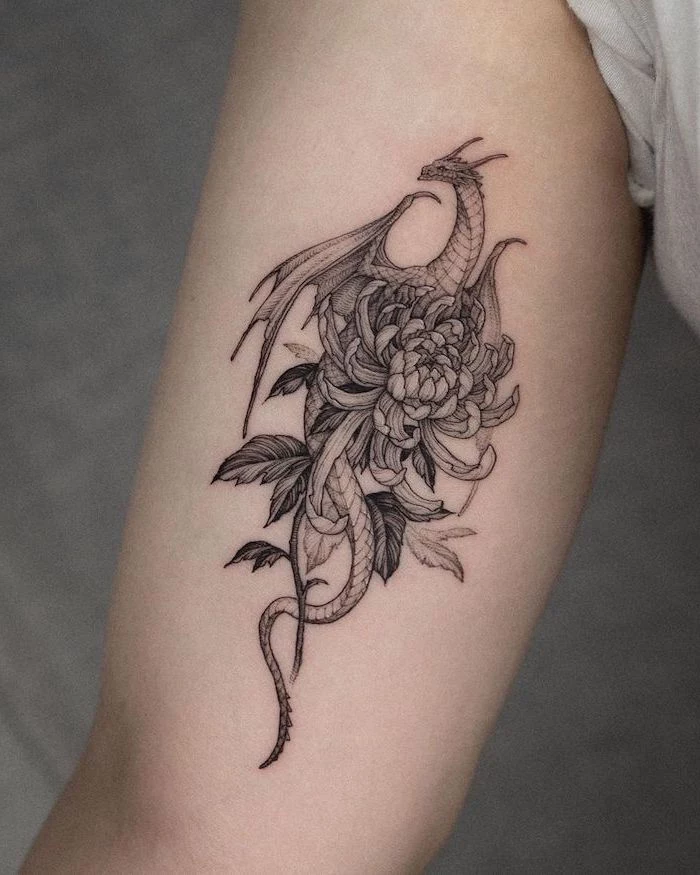


- Vibrant colors that stay bright for decades.
- Crisp, sharp lines that don’t blow out over time.
- Smooth, seamless shading that gives a sense of depth.
The secret? It’s a combination of an artist’s skill and premium aftercare. Using a healing ointment like Hustle Butter Deluxe during the initial phase, followed by a breathable bandage like Saniderm, can make a world of difference in how your dragon’s scales and fire settle into the skin.
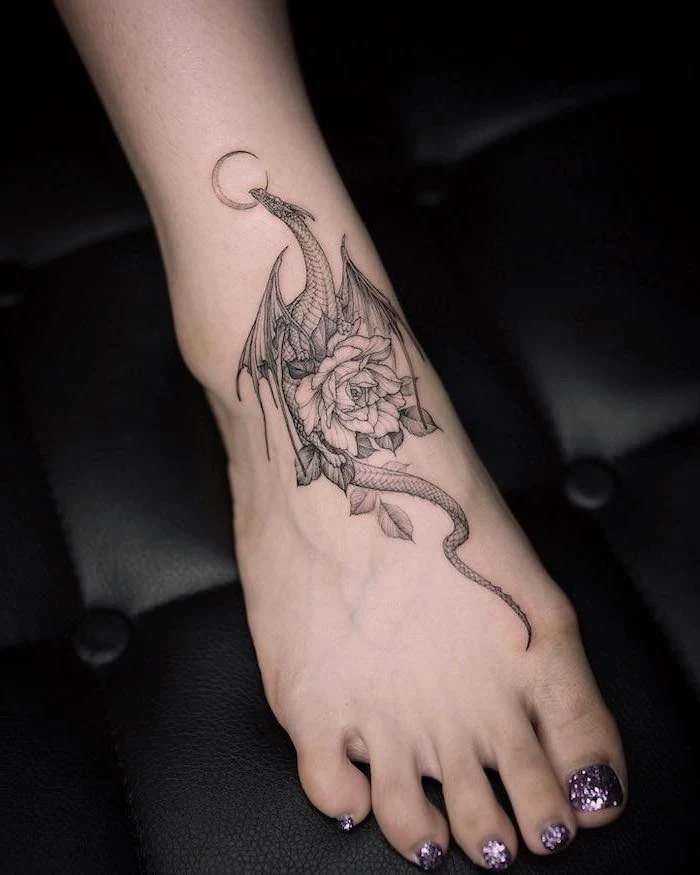
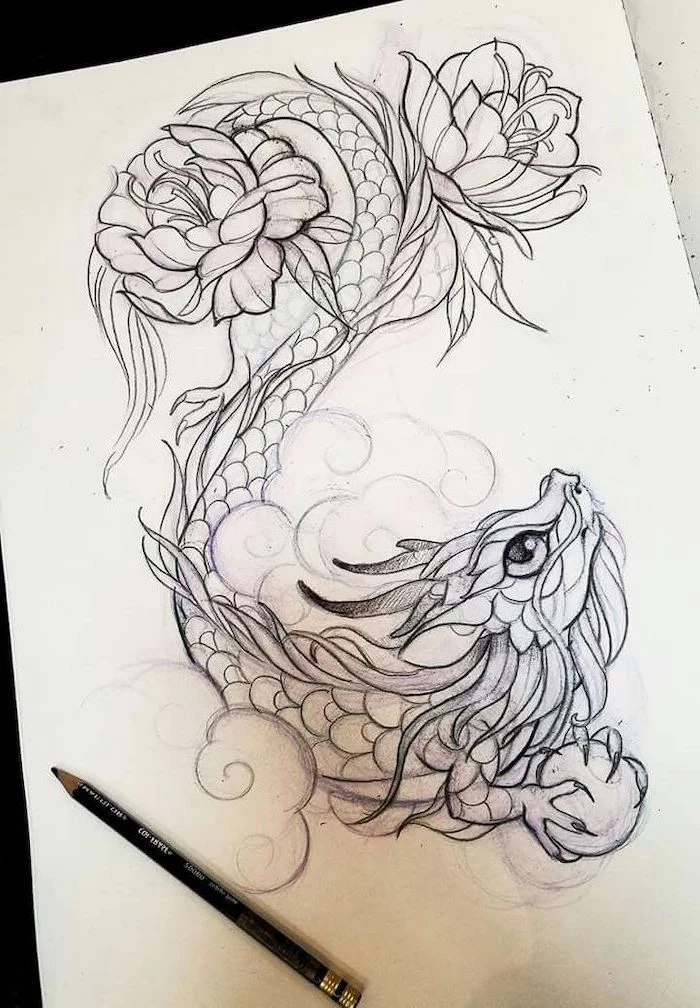

Don’t underestimate the power of pop culture in modern dragon designs. From the elegant, spirit-like Haku in *Spirited Away* to the raw, terrifying presence of Drogon in *Game of Thrones* or the classic wish-granting Shenron from *Dragon Ball Z*, these icons provide a powerful visual shorthand that can be a fantastic starting point for a custom piece.
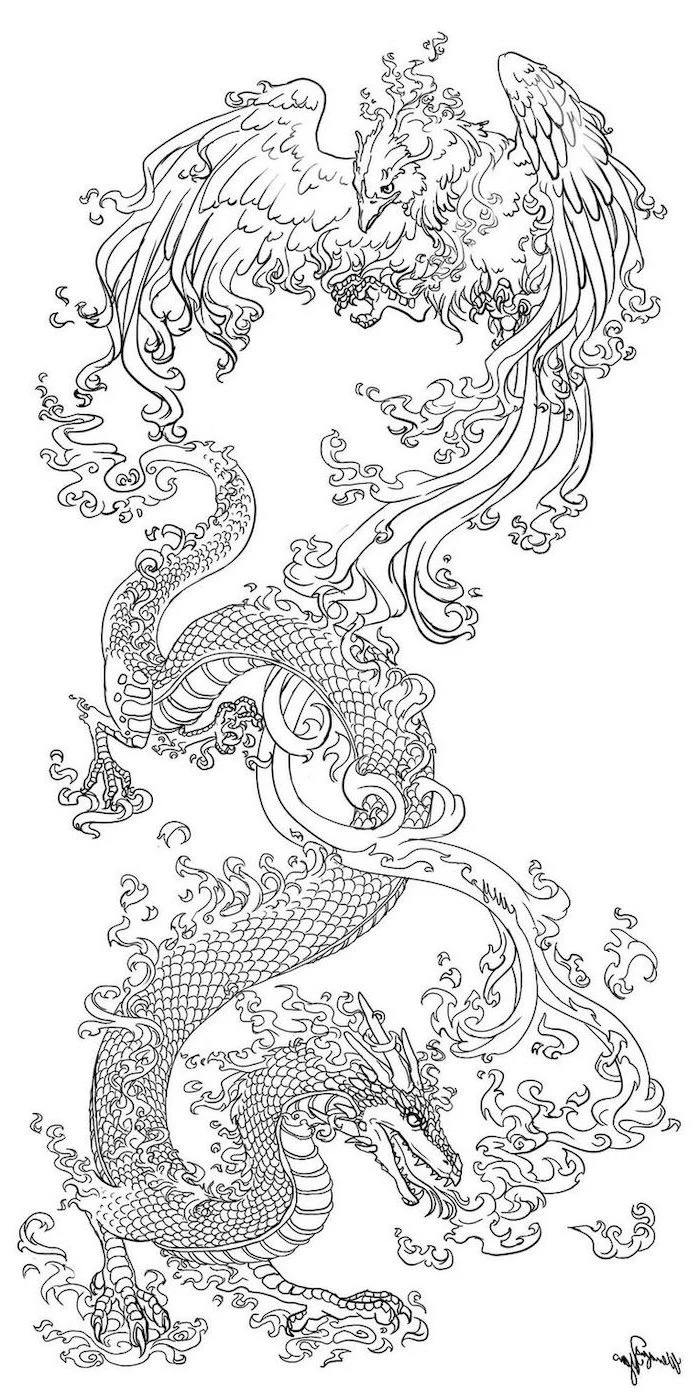
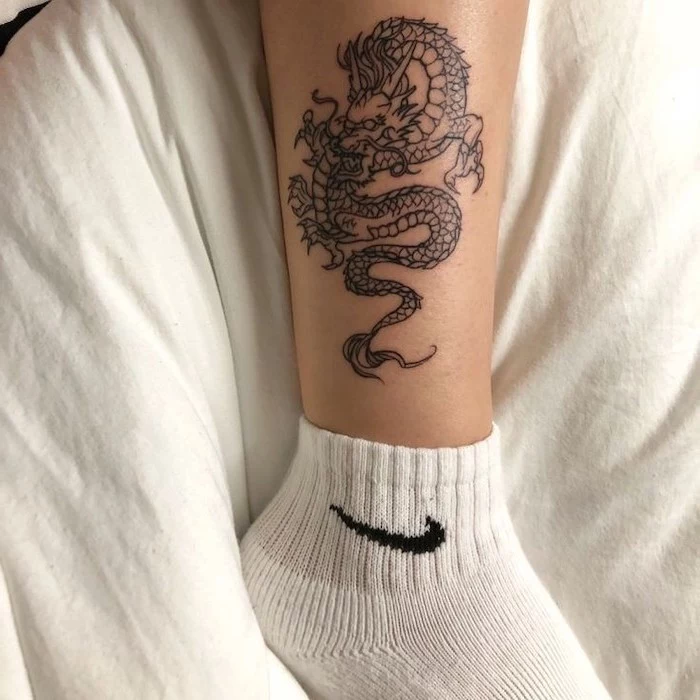
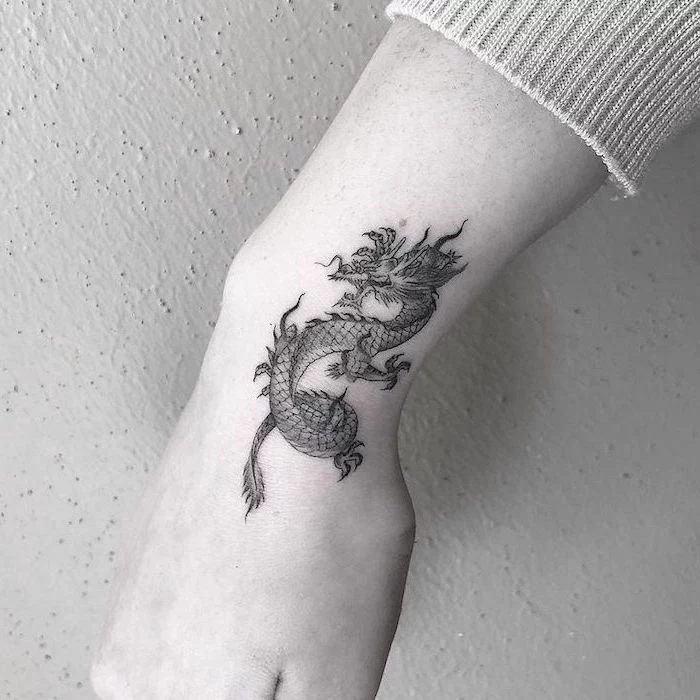
The Consultation is Non-Negotiable: This meeting is your most important tool. It’s where you gauge the artist’s professionalism, see if your personalities click for a long-term project, and collaboratively sketch out the dragon’s flow on your body. A great artist will use this time to trace the lines of your muscles to ensure the dragon looks like it belongs there. Never book a large-scale piece without one.
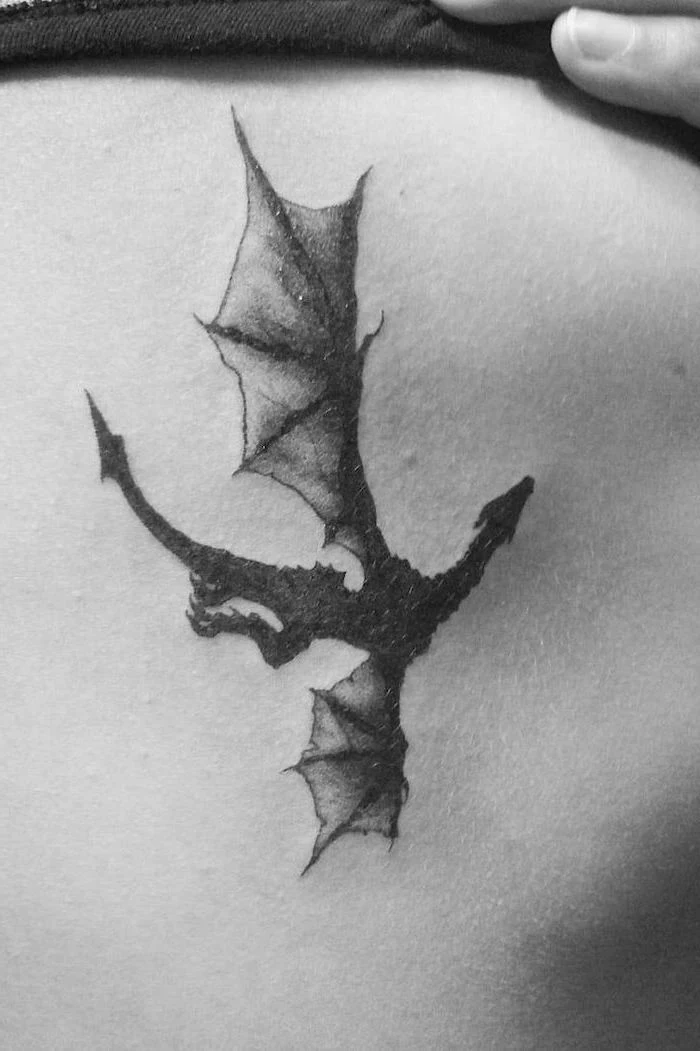

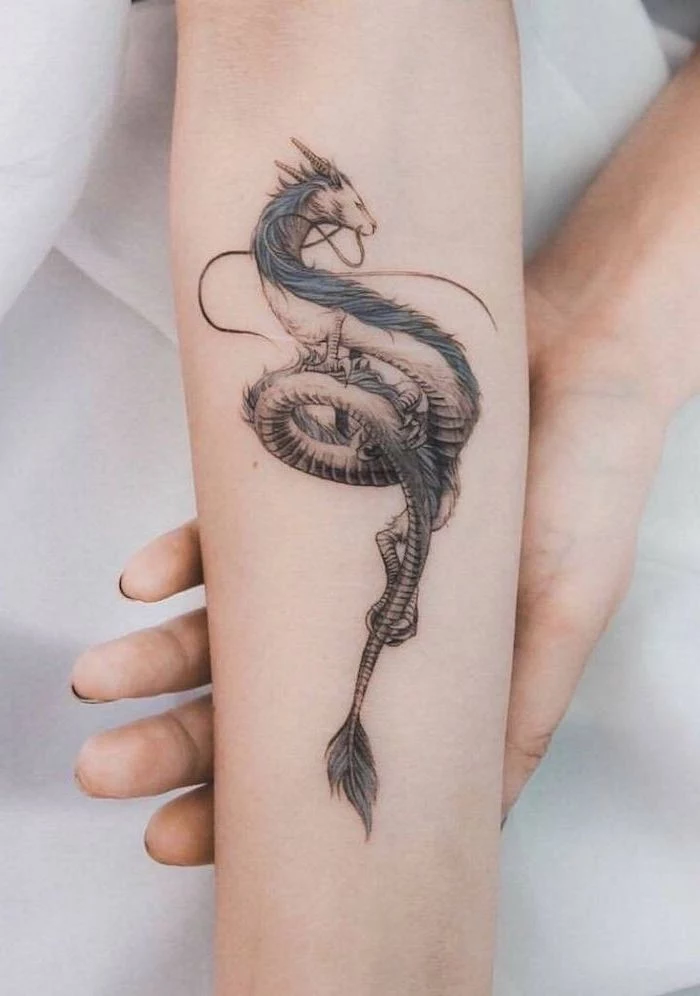
Can you get a hyper-detailed dragon in a small size?
Technically, yes, but you shouldn’t. Ink spreads under the skin over time—a process called ‘migration.’ Those tiny, intricate scales that look incredible on day one can blur into an unreadable grey patch within 5-10 years. For a dragon, size equals longevity. Allow room for the details to breathe so your creature remains majestic for a lifetime.
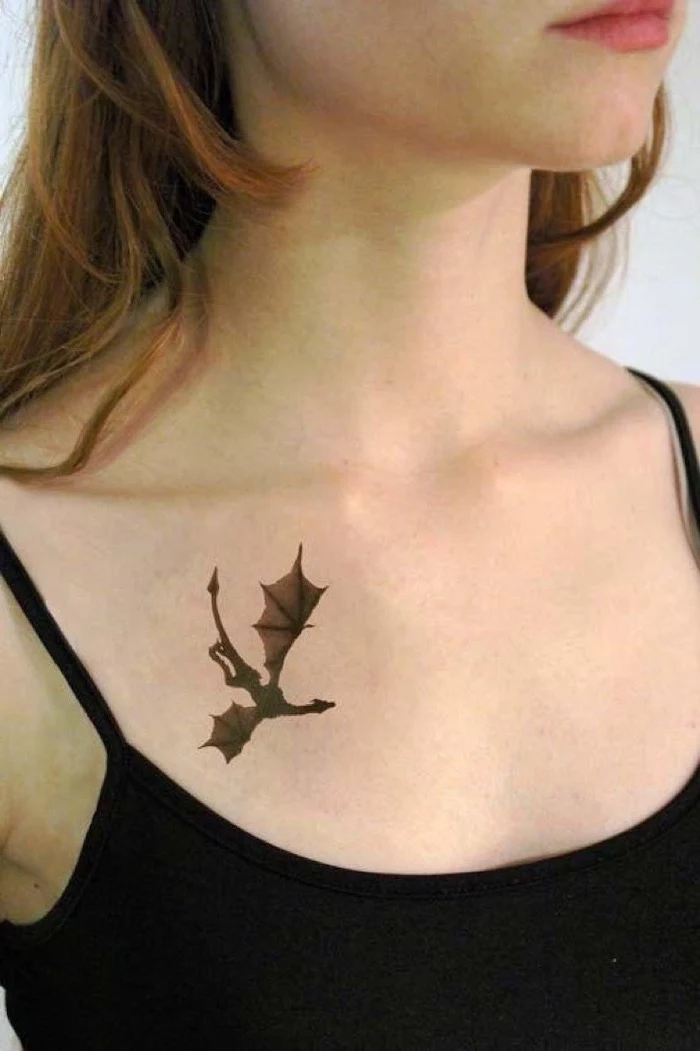
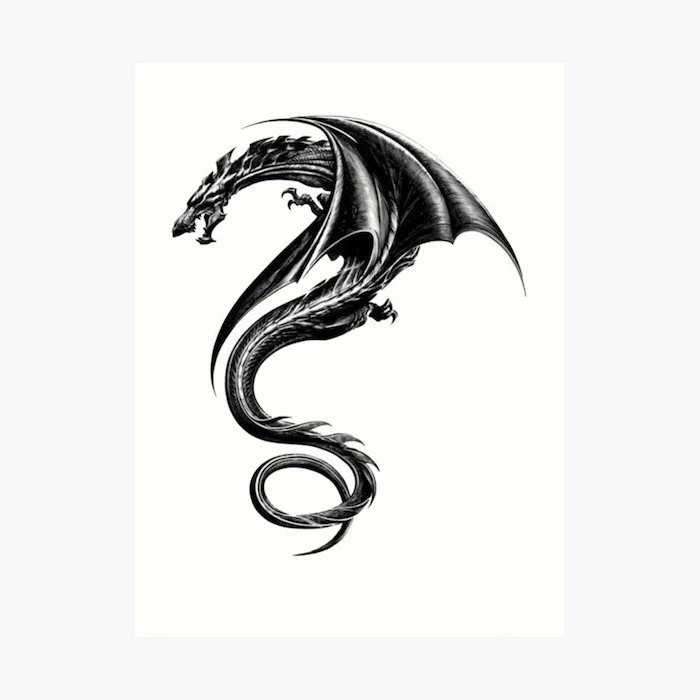
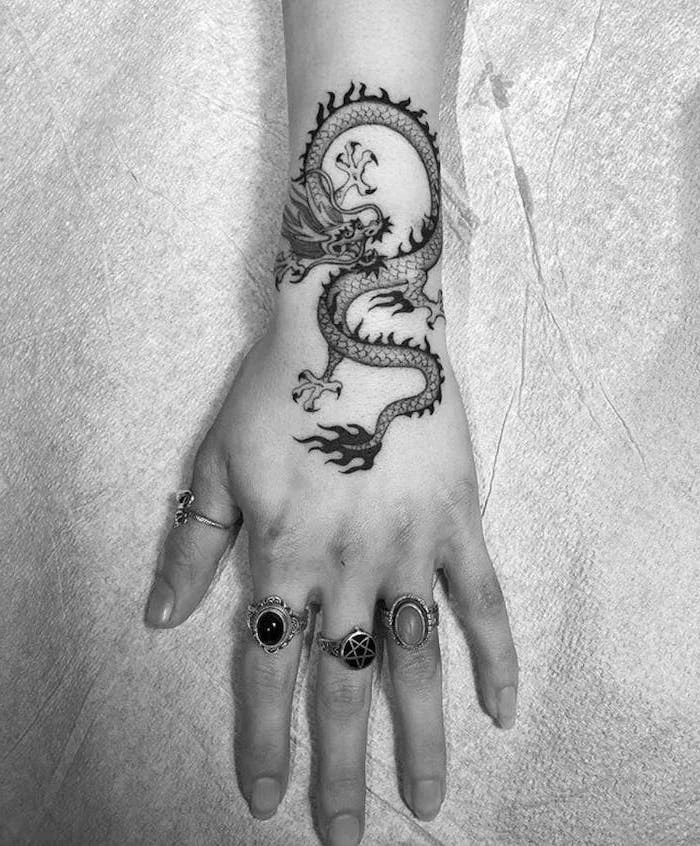
Fine Line vs. Bold Traditional: A fine-line dragon, rendered with a single needle, offers an elegant, delicate aesthetic perfect for smaller placements on the wrist or ankle. A bold traditional dragon, with its thick black outlines and saturated color, is built to last and make a statement from across the room. Your choice depends on whether you’re aiming for subtlety or impact.
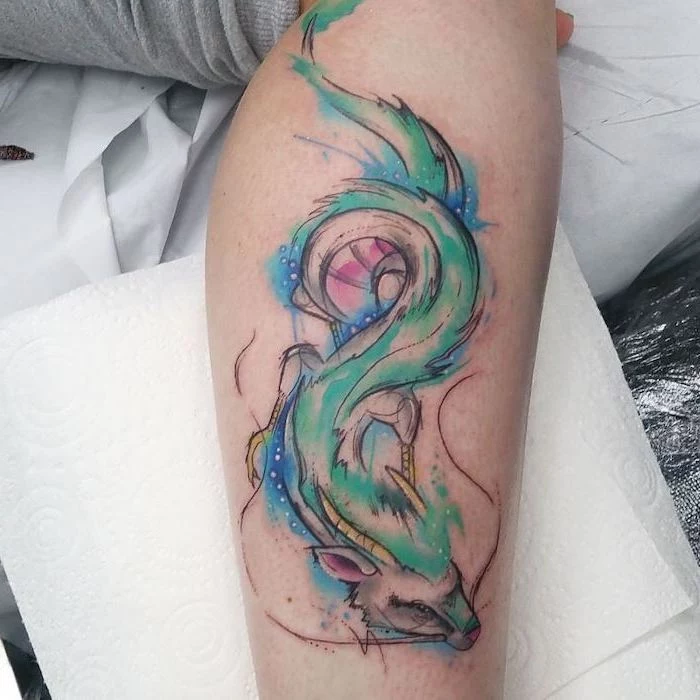
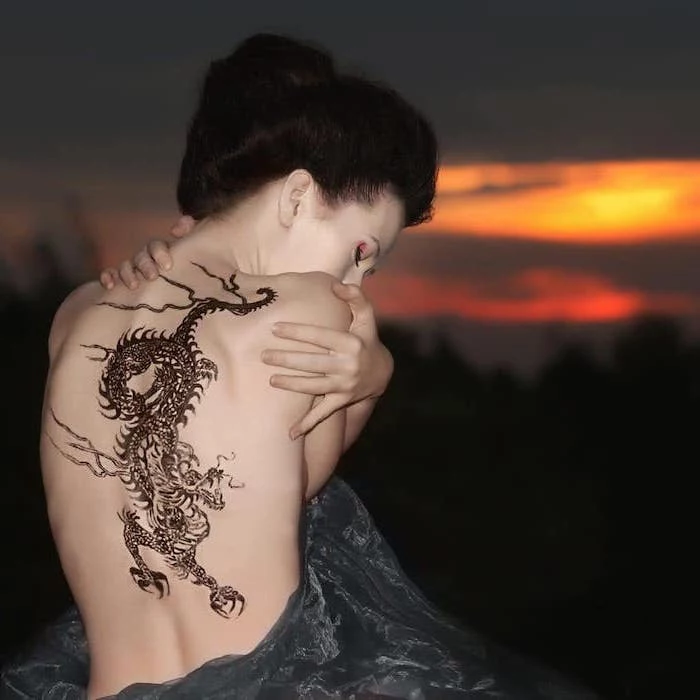
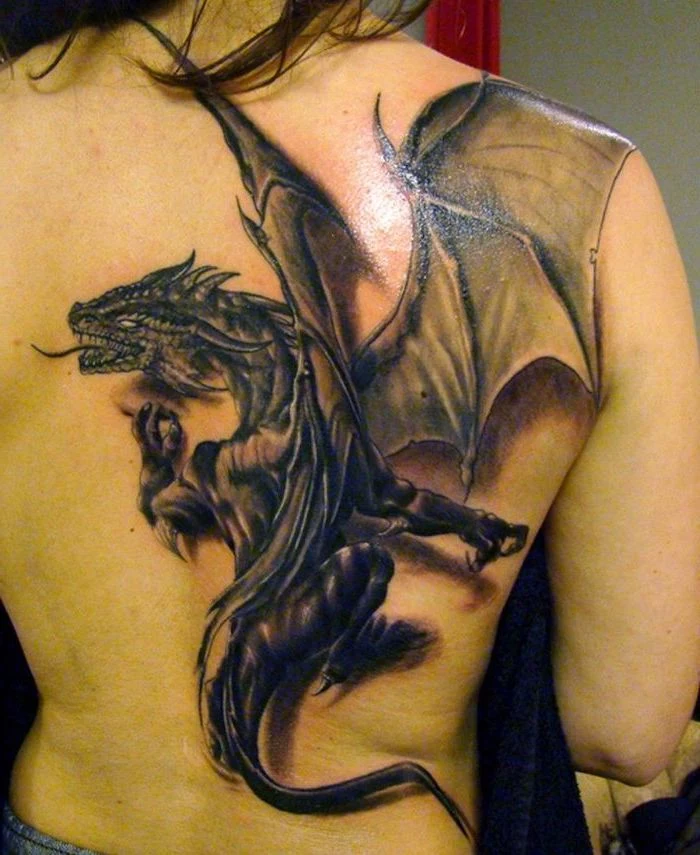
The Ouroboros—the dragon or serpent eating its own tail—is one of the oldest mystical symbols in the world, appearing in ancient Egypt, Greece, and Norse mythology. It represents infinity and the eternal cycle of life, death, and rebirth.
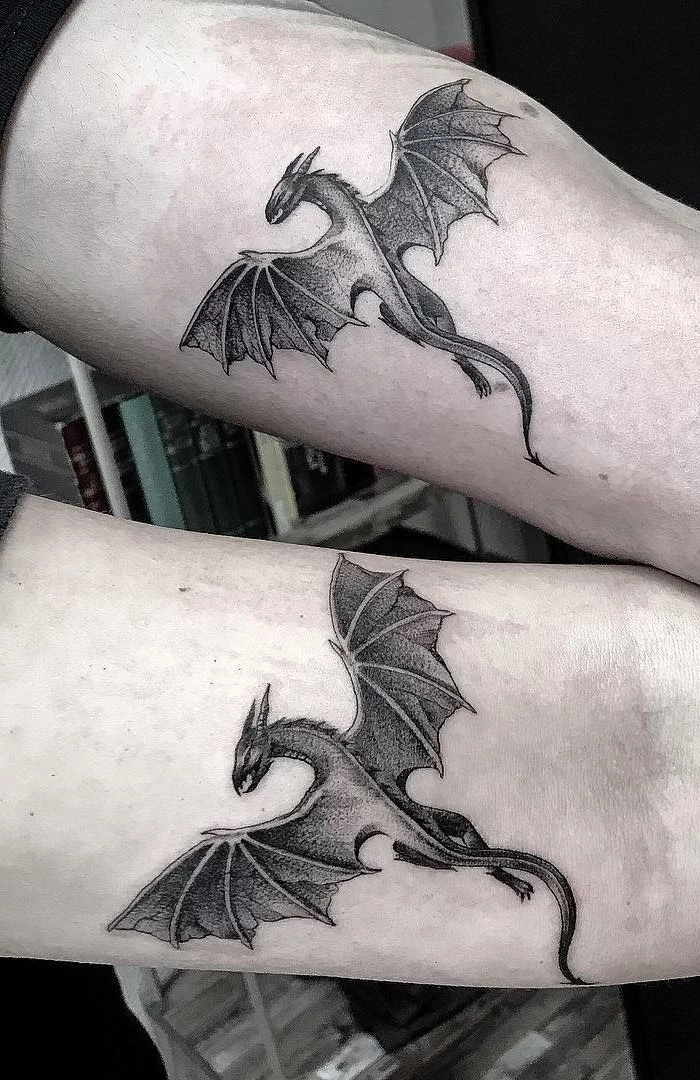

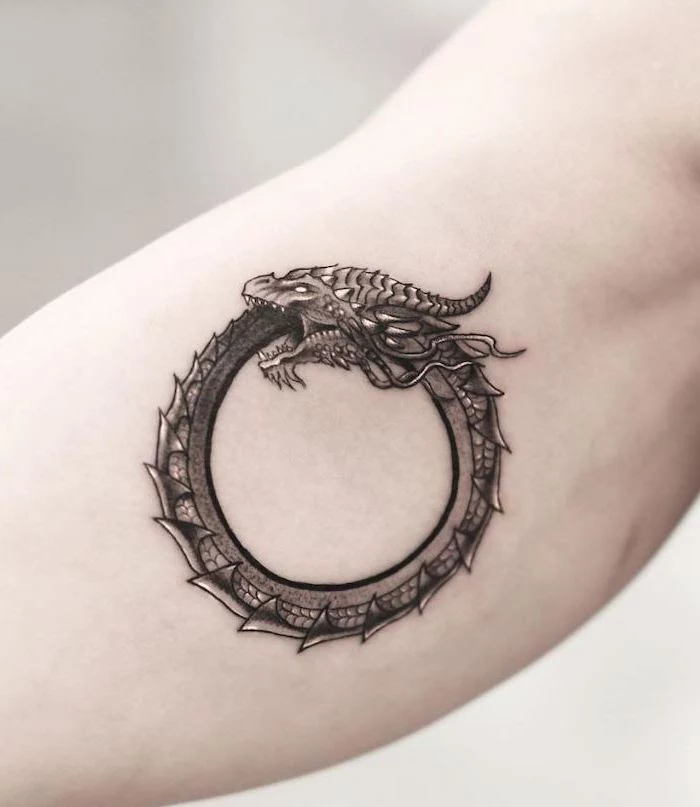
Your skin tone is a critical part of the final artwork. Fair skin acts like a bright white canvas, making colors pop vibrantly. On darker skin tones, an artist might use a different approach, focusing on bold black outlines, strategic use of negative space, and a high-contrast palette with bright yellows, reds, and oranges to ensure the dragon stands out powerfully.
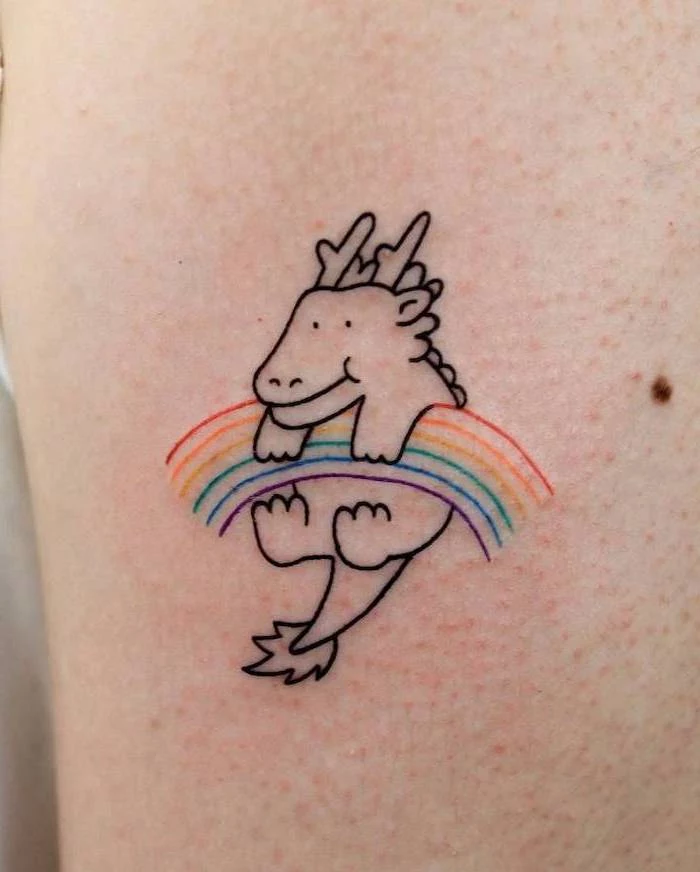
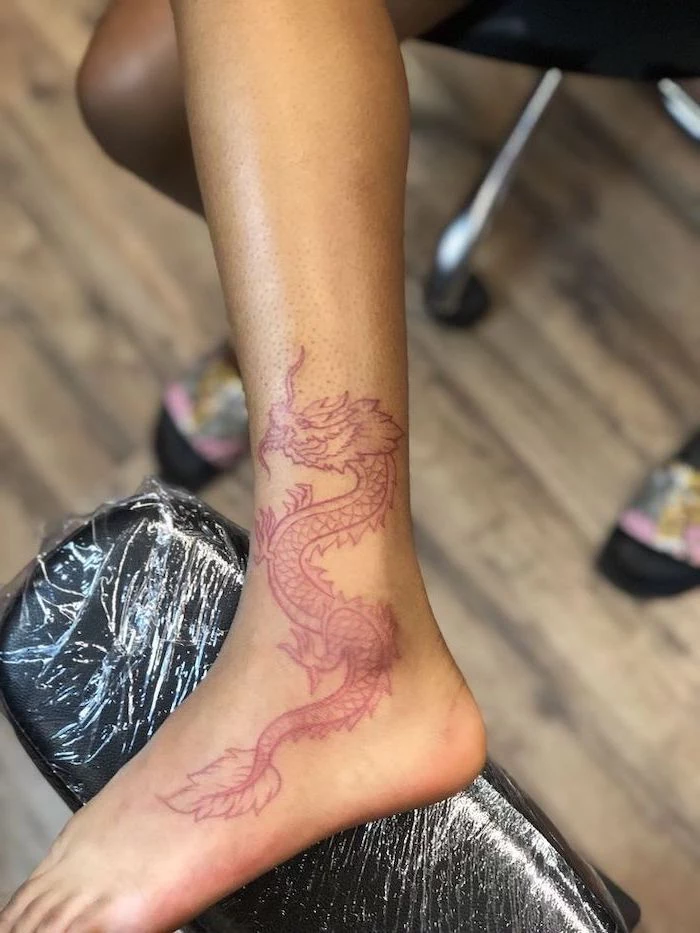
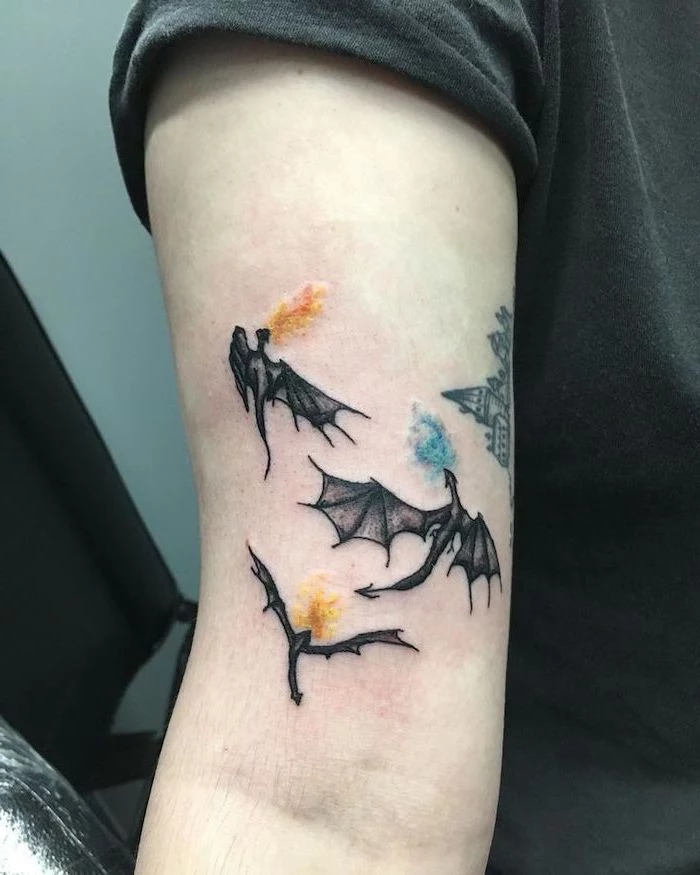
The journey of a large dragon piece is a marathon, not a sprint. A full sleeve or back piece can take anywhere from 20 to 60+ hours, broken into multiple sessions. This not only allows your skin to heal properly but also helps manage the cost. Think of it as an investment, with payments spread over several months or even a year.
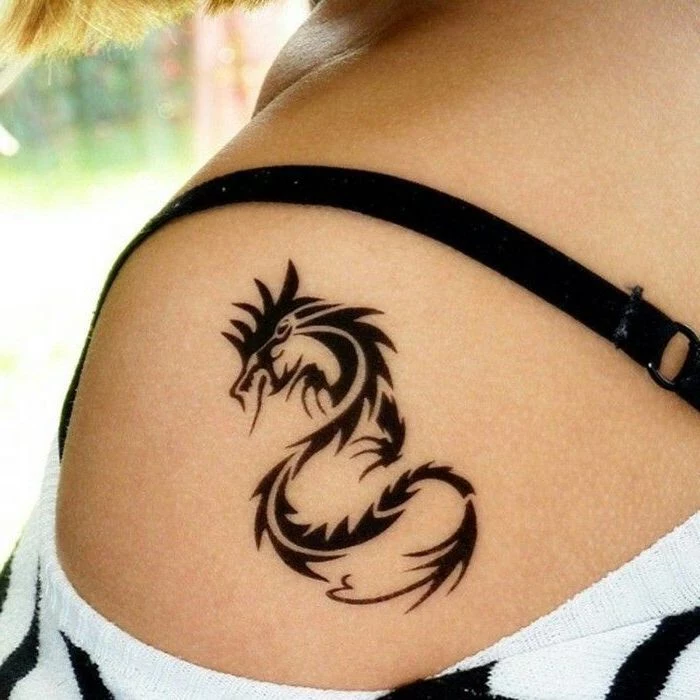
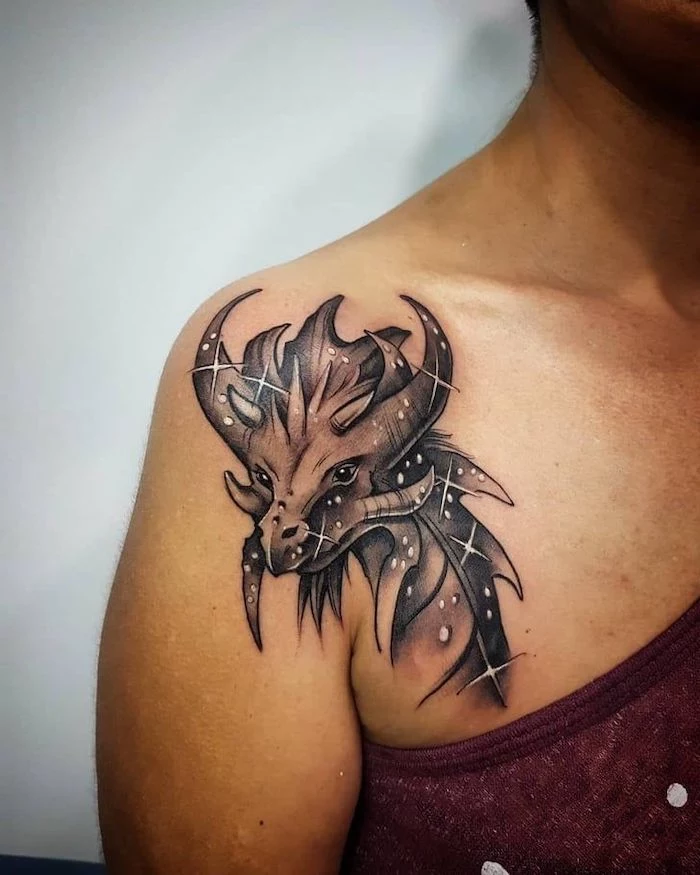
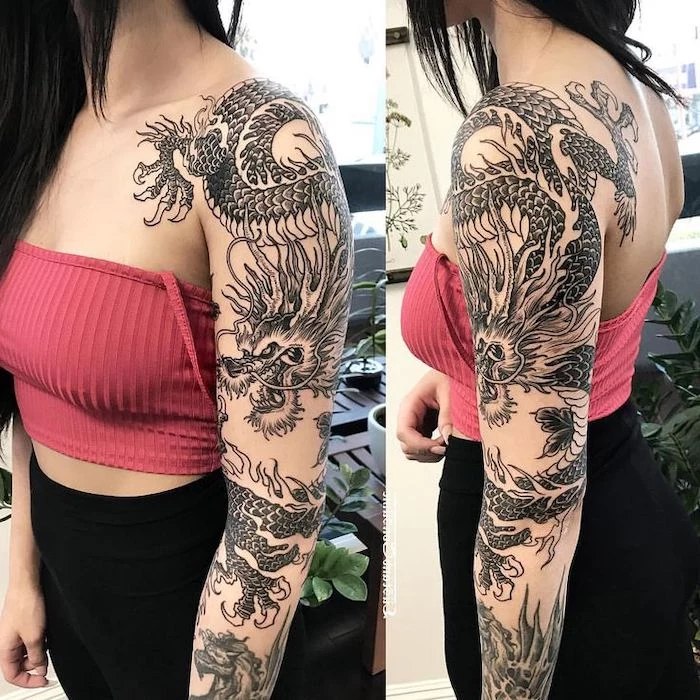
- Perfectly accentuates the curve of a hip or shoulder.
- Flows naturally with the muscles of an arm or leg.
- Looks dynamic and alive, not flat and static.
The key? Your artist isn’t just drawing a dragon; they’re sculpting it to your body. During the stenciling phase, they will often redraw sections directly on your skin to ensure the dragon’s tail wraps just right or its claws grip the contours of your anatomy.
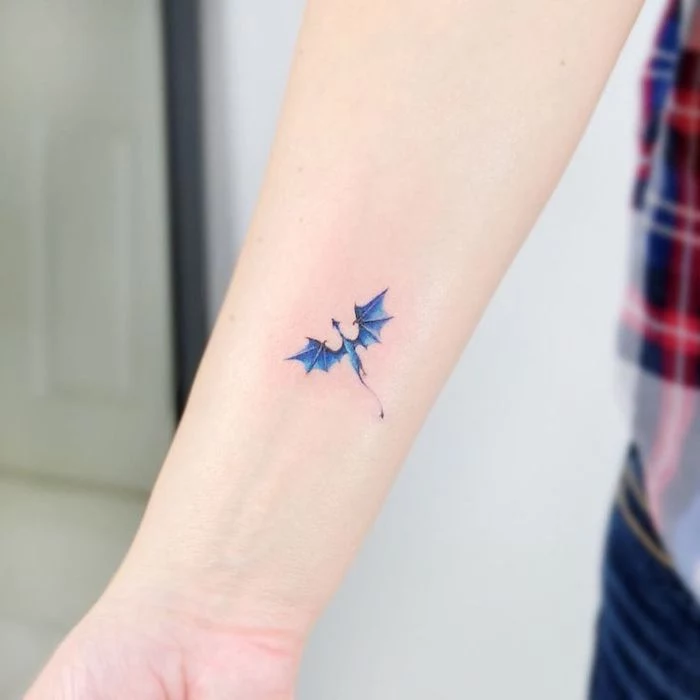
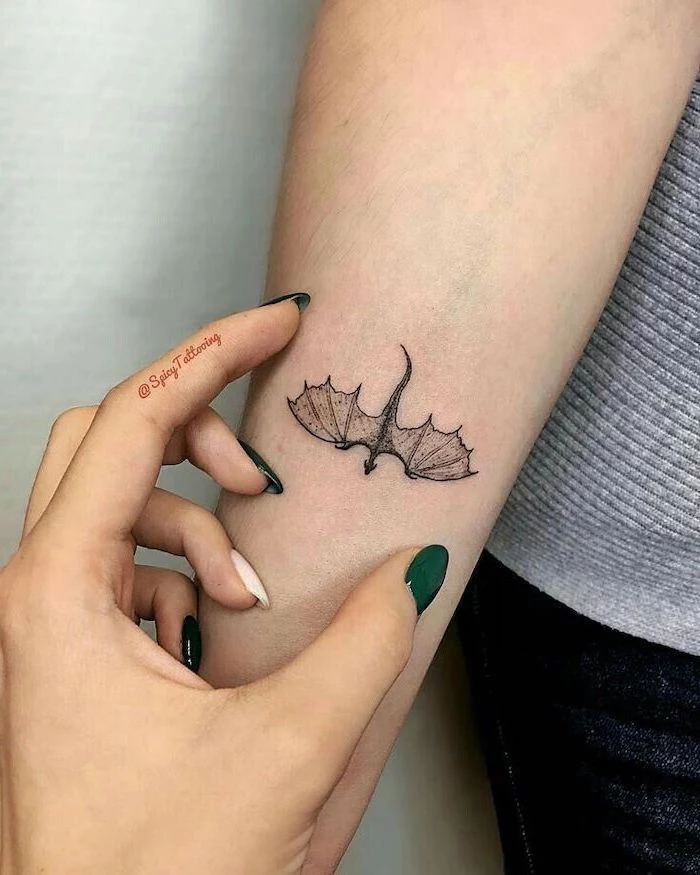
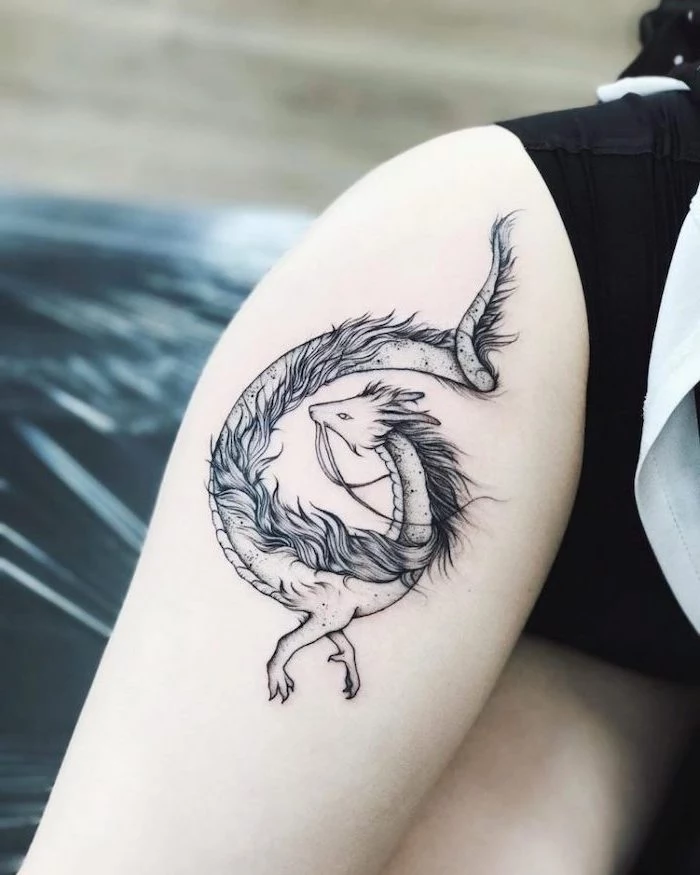
The Peony & The Dragon: See a dragon paired with a peony flower? This is a classic combination in Japanese art. The dragon, a symbol of masculine power and ferocity, is balanced by the peony, the ‘King of Flowers,’ which represents feminine beauty, wealth, and elegance. Together, they symbolize a perfect harmony of power and grace.
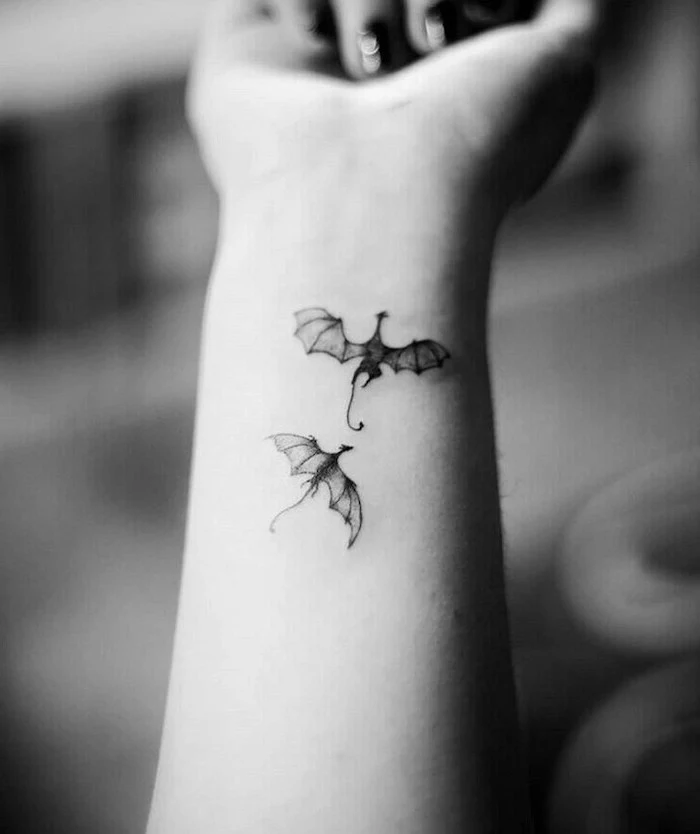
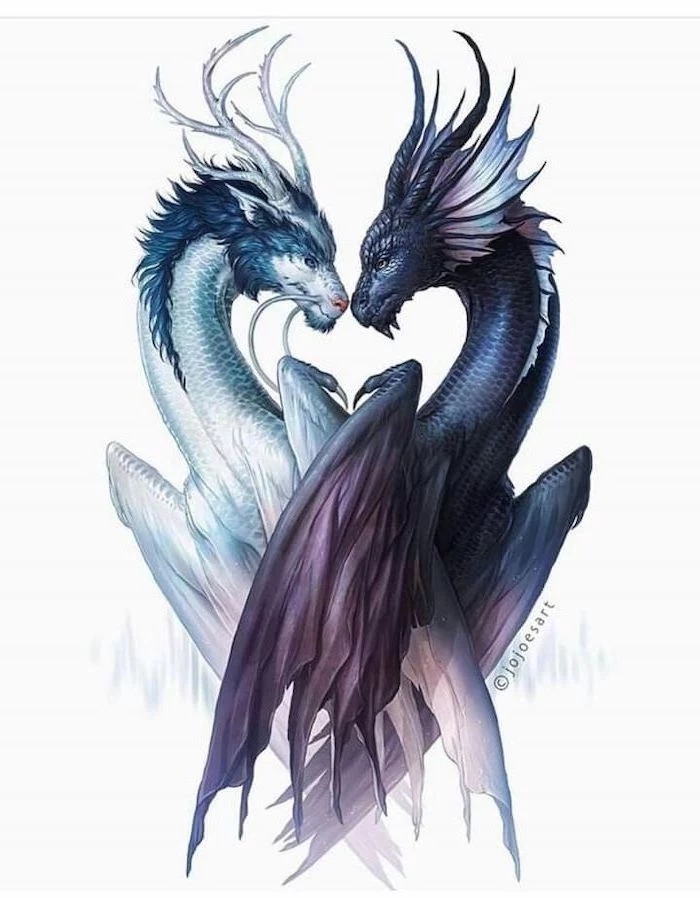
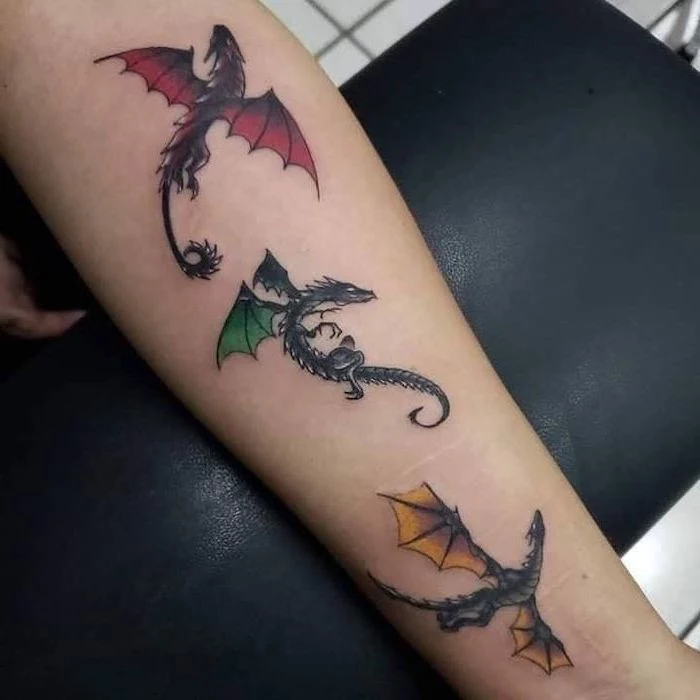
What about white ink highlights?
Used correctly, white ink from a brand like Intenze’s Zuper Black set can make a dragon’s eye glint or a scale flash. However, be aware that white ink is the most susceptible to fading and can yellow over time with sun exposure. A skilled artist uses it as a final, strategic ‘pop,’ not as a primary element for longevity.
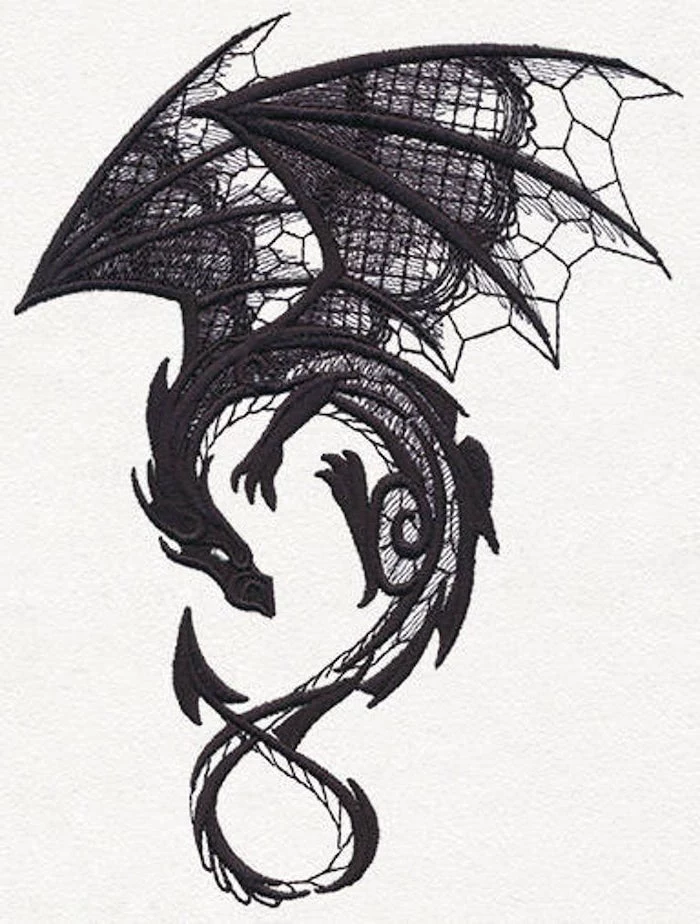
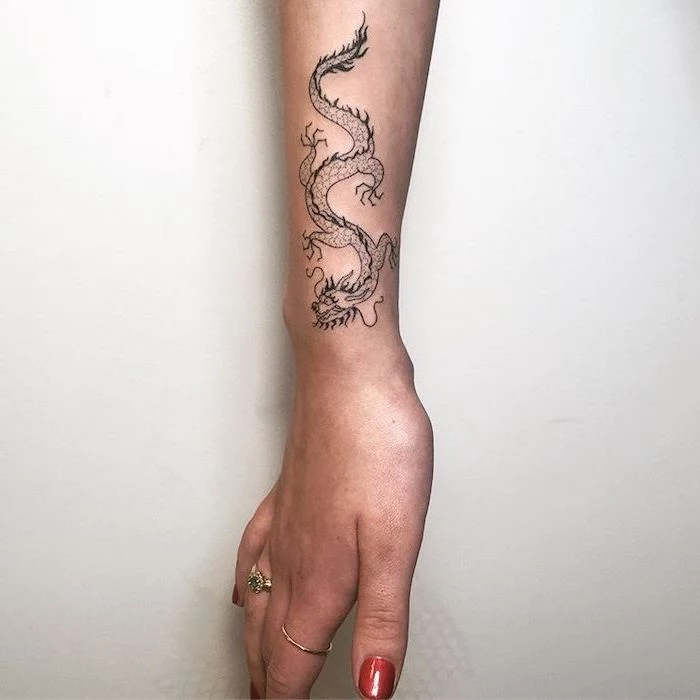
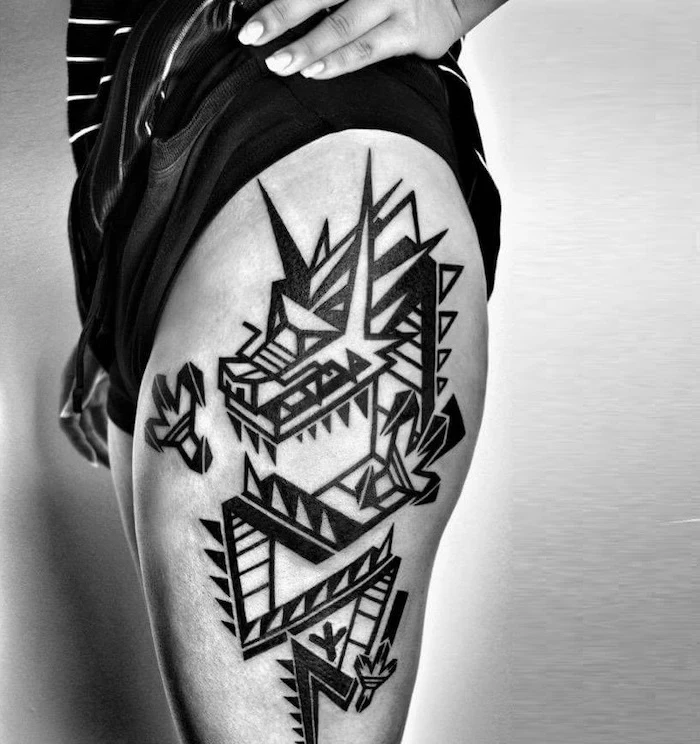
- Bring a detailed mood board with images of dragons, colors, and styles you love.
- Wear loose, comfortable clothing that provides easy access to the tattoo area.
- Eat a substantial meal 1-2 hours before your appointment to keep your blood sugar stable.
- Pack a sugary snack, water, and headphones for longer sessions.
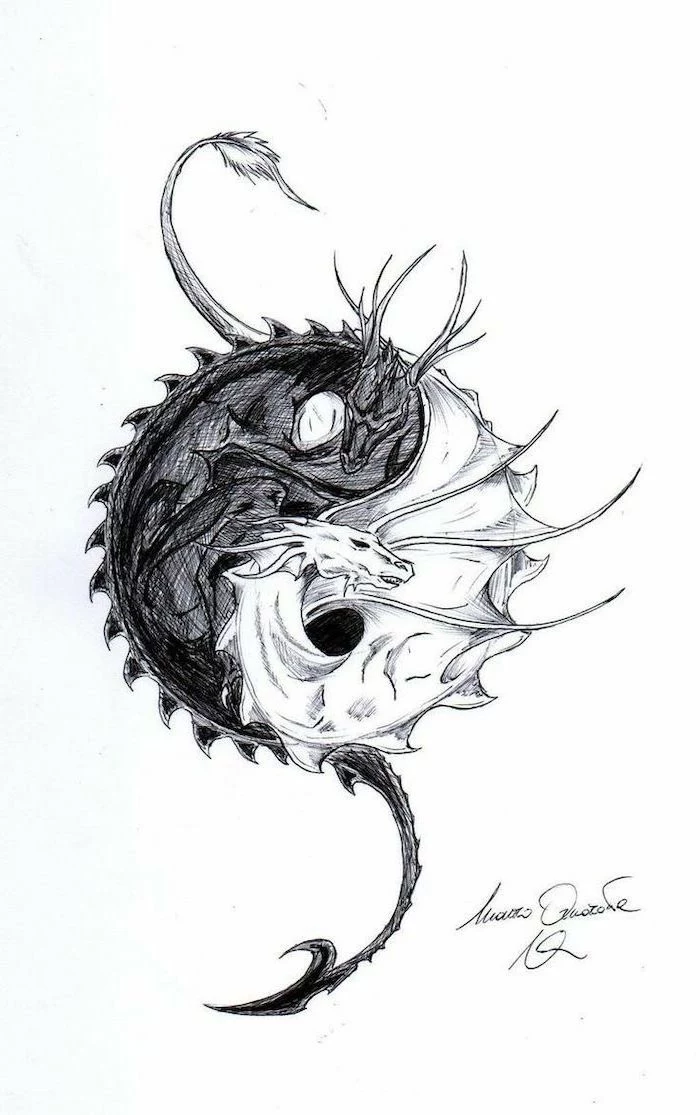
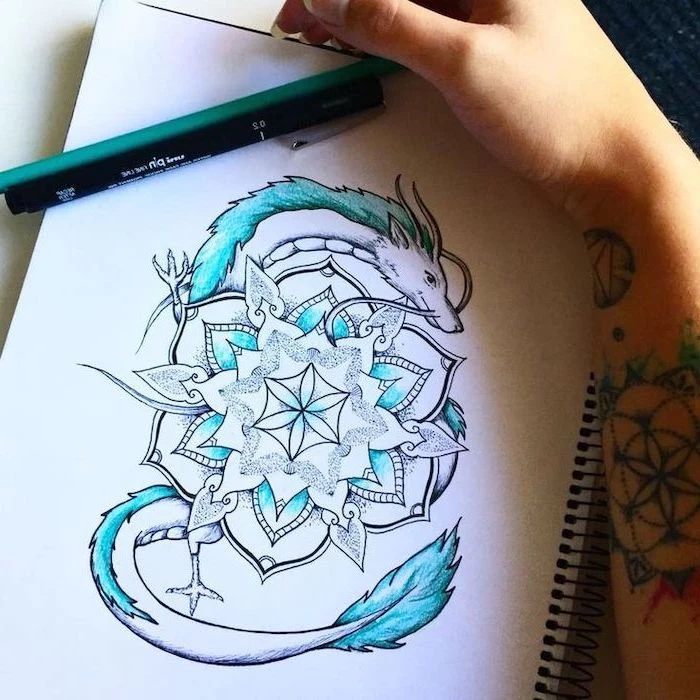
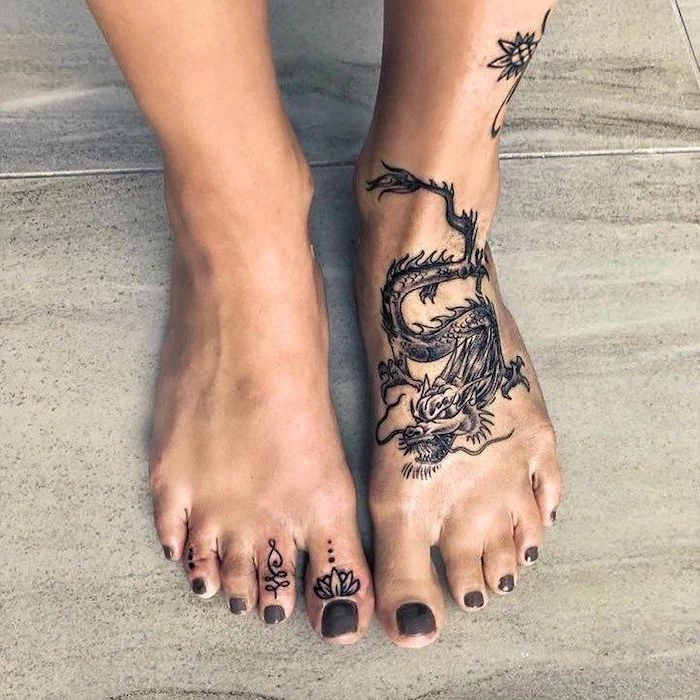
The eyes are the soul of the creature. A simple change from a slitted, reptilian pupil to a round, intelligent one can shift the dragon’s entire feel from a wild beast to a wise, ancient being. Discuss the eye color and shape in detail with your artist; it’s a small detail that makes a monumental difference.
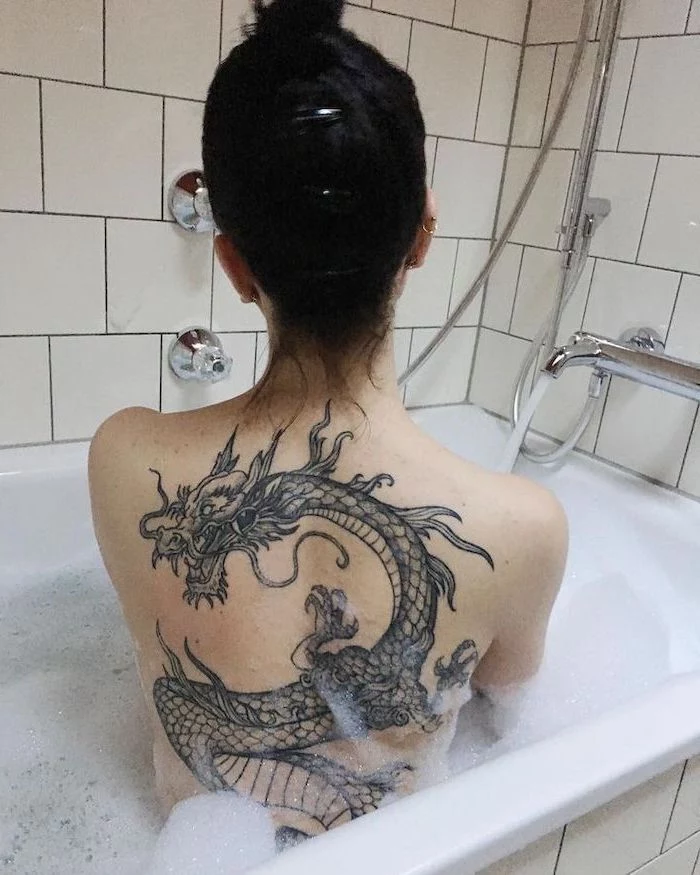

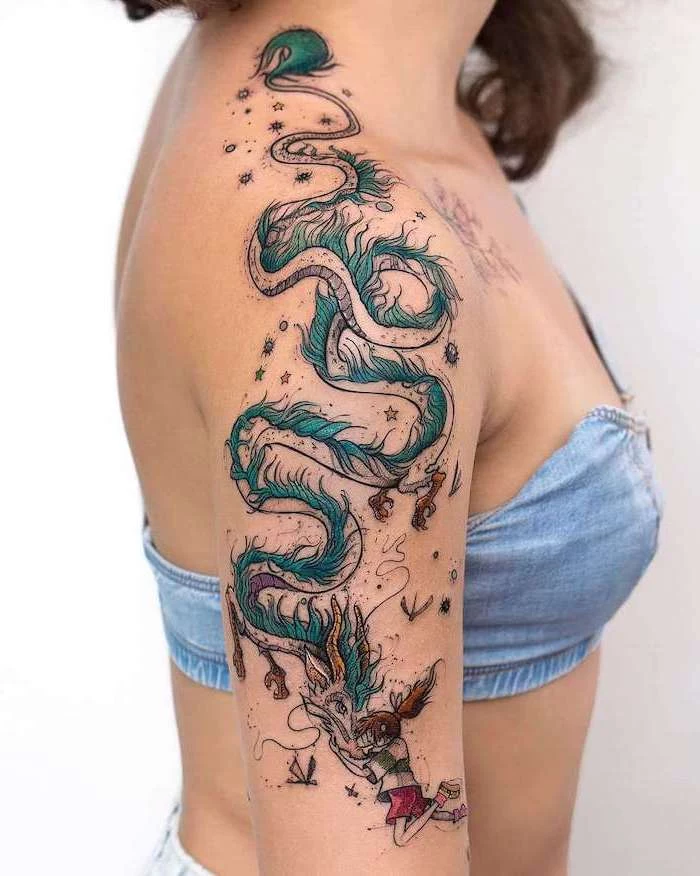
The Welsh Dragon (Y Ddraig Goch): Instantly recognizable from the Welsh flag, this dragon is a powerful symbol of heritage and fierce independence. With its four-legged, upright posture and defiant expression, it’s a fantastic and less common choice for those wanting to celebrate Celtic roots or simply a different style of powerful beast.
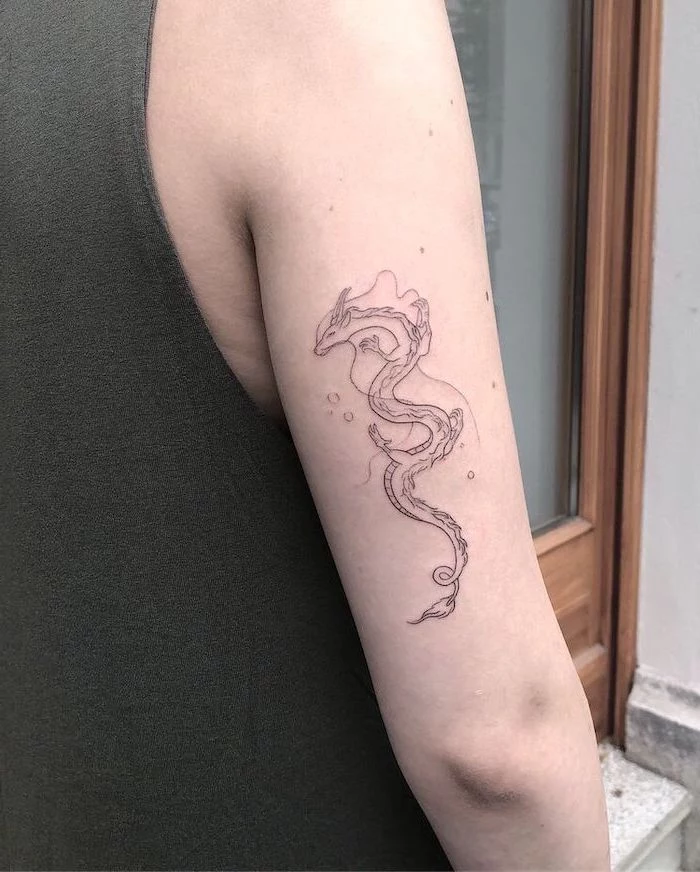
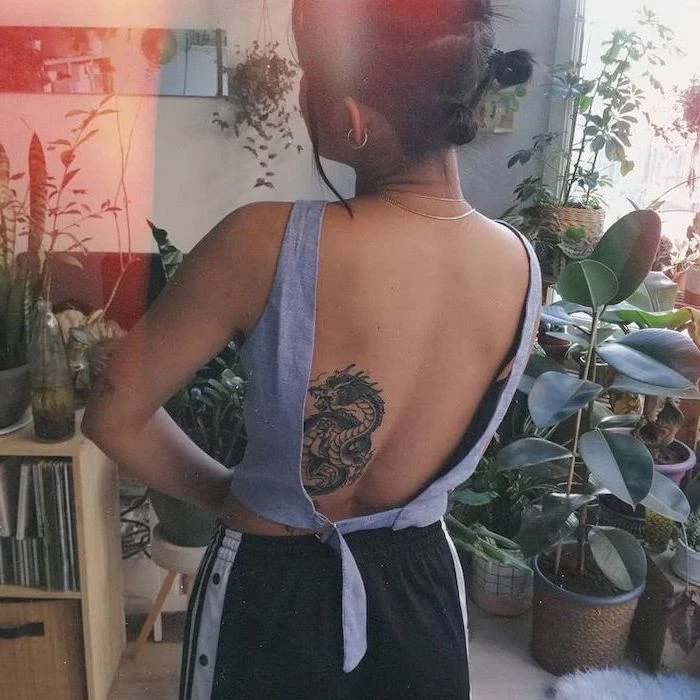
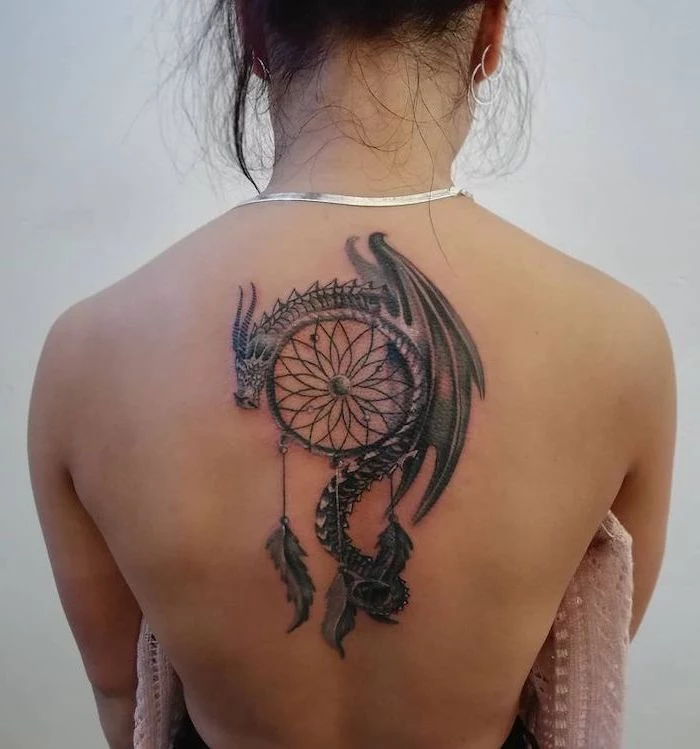
A dragon holding a pearl or a crystal orb under its chin or in its claws is a common motif in East Asian art. This pearl, known as the ‘yeouiju’ in Korea, represents wisdom, truth, and the power of creation.
Incorporating this element elevates your tattoo from a mere creature to a guardian of profound power and knowledge. It signifies that the dragon is not just a beast, but a master of universal forces.
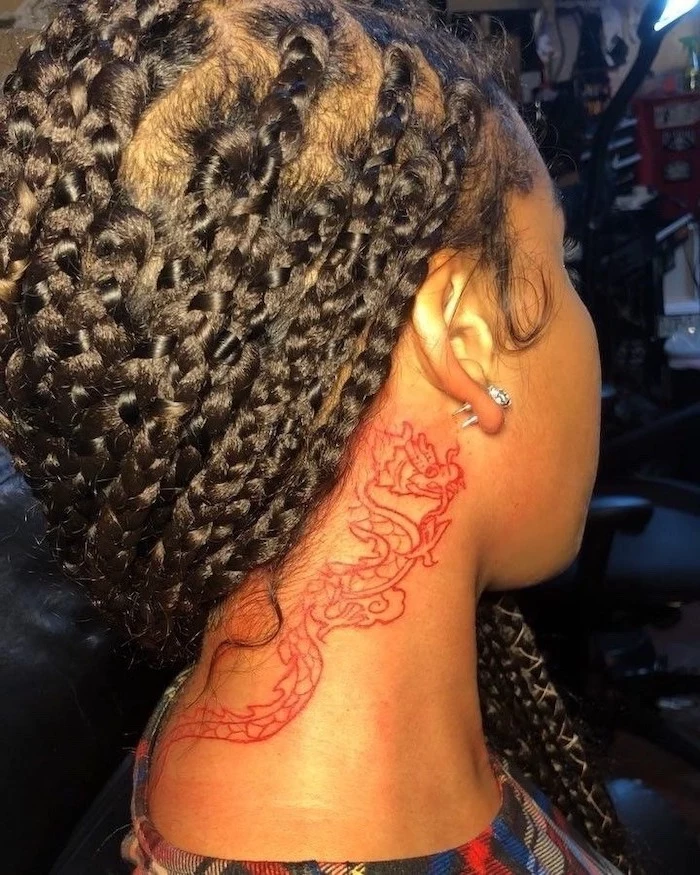
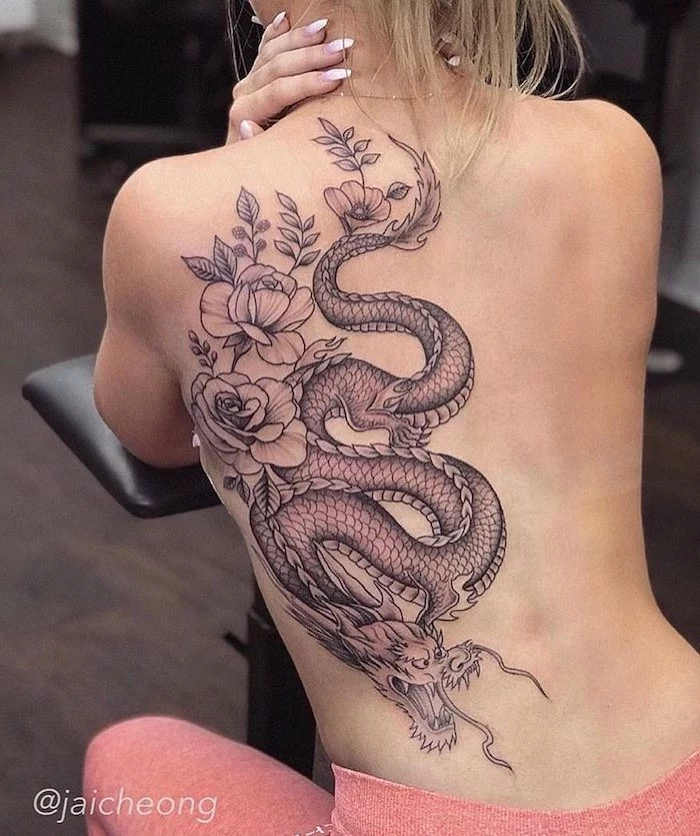
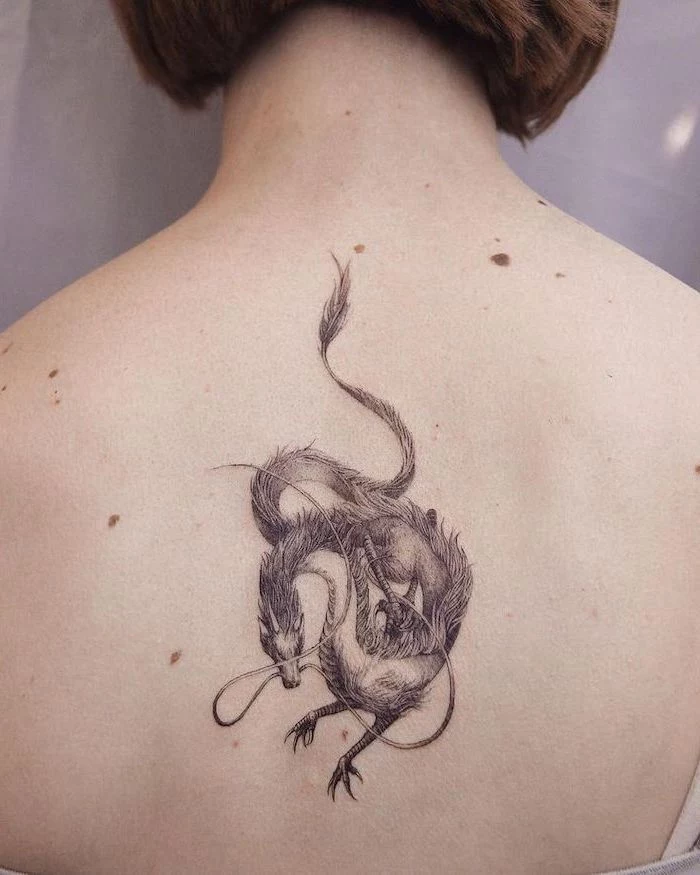
Can a dragon tattoo be used to cover up an old one?
Absolutely. In fact, they are ideal for it. The complex texture of scales, the dense black of the body, and the dynamic flow of smoke or clouds provide excellent camouflage for an unwanted tattoo. A skilled artist will design the new dragon to strategically place the darkest, most detailed sections directly over the old ink, making it disappear completely.
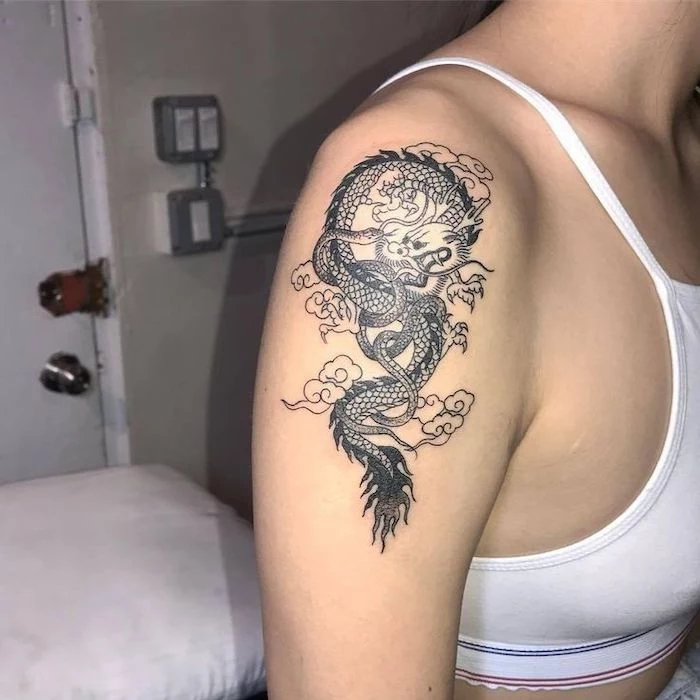
Long-term vibrancy is a two-part equation: great ink and diligent sun protection. Once healed, consistently applying a high-SPF sunscreen (SPF 30 or higher) to your dragon tattoo is the single most effective thing you can do to prevent colors from fading and black lines from spreading. The sun is the number one enemy of a crisp tattoo.

